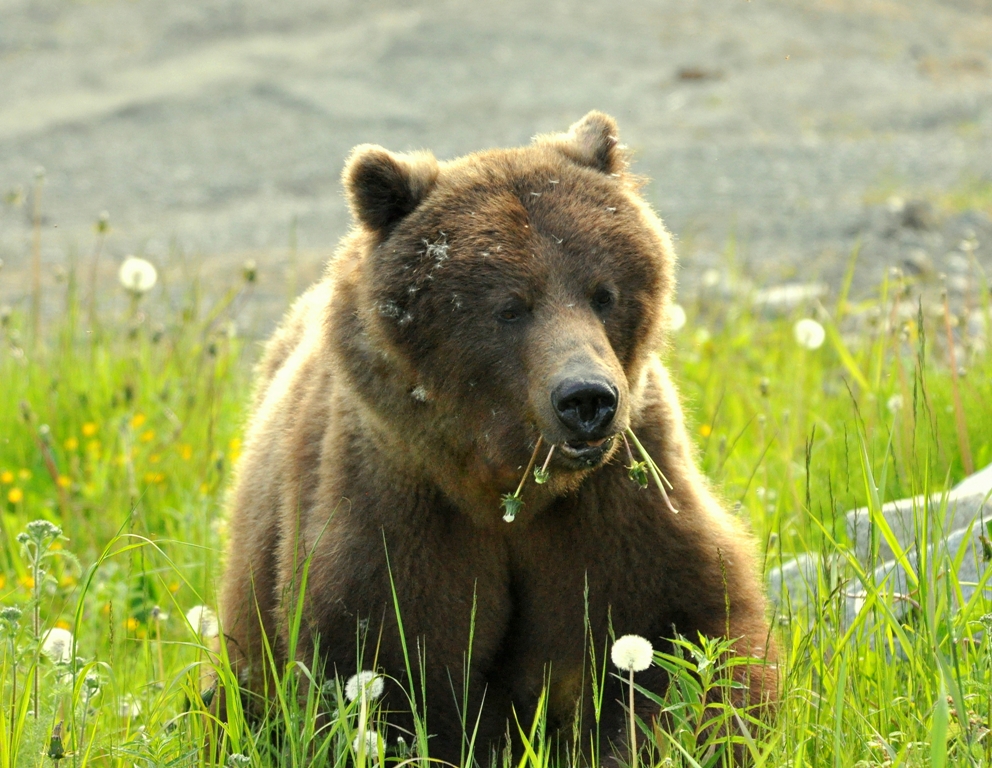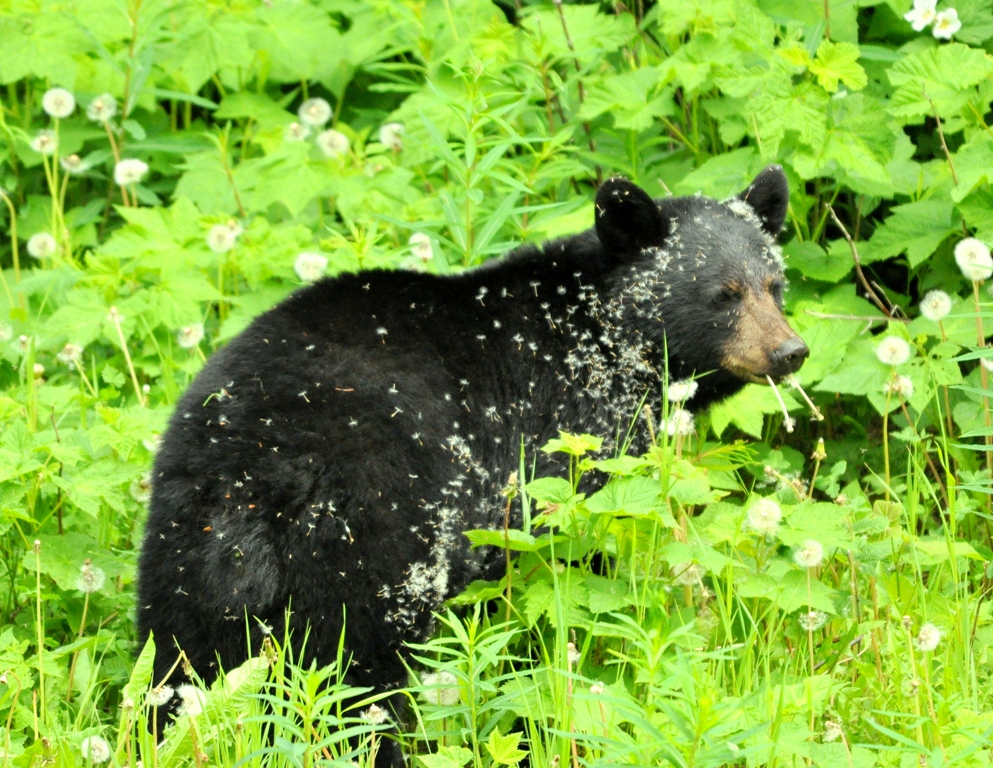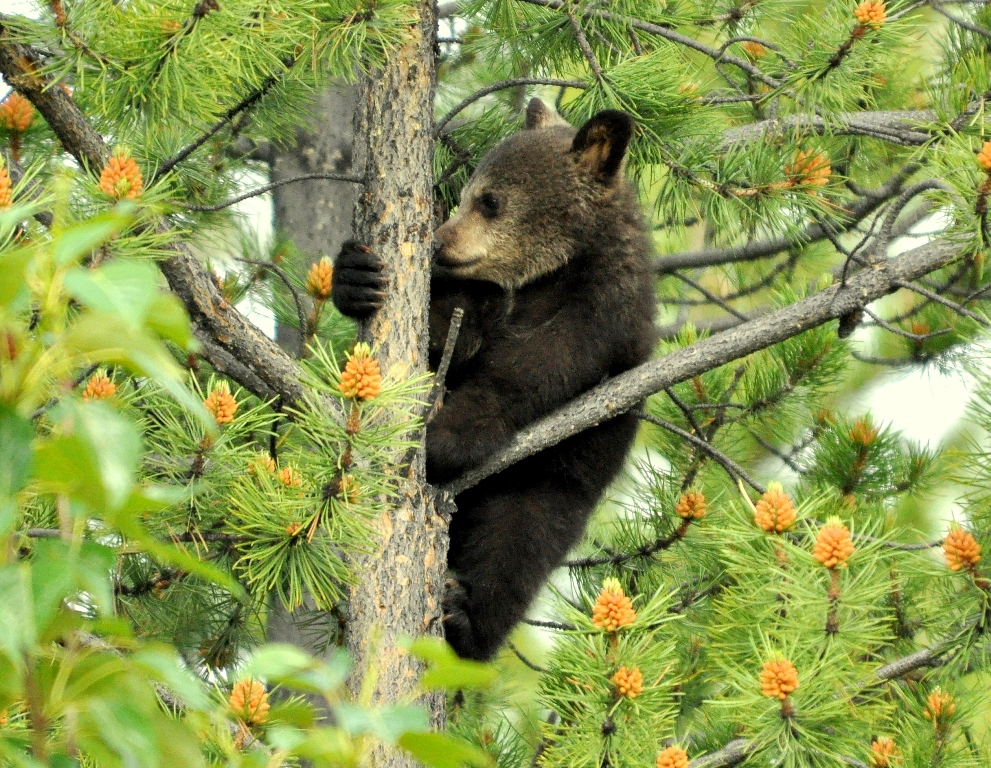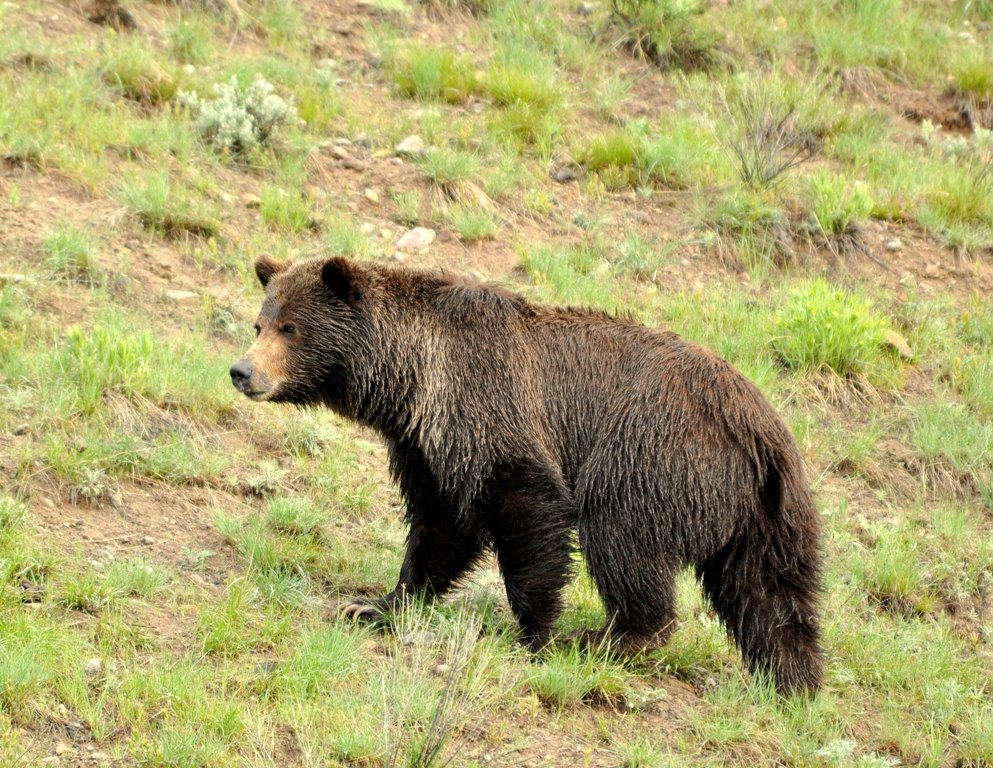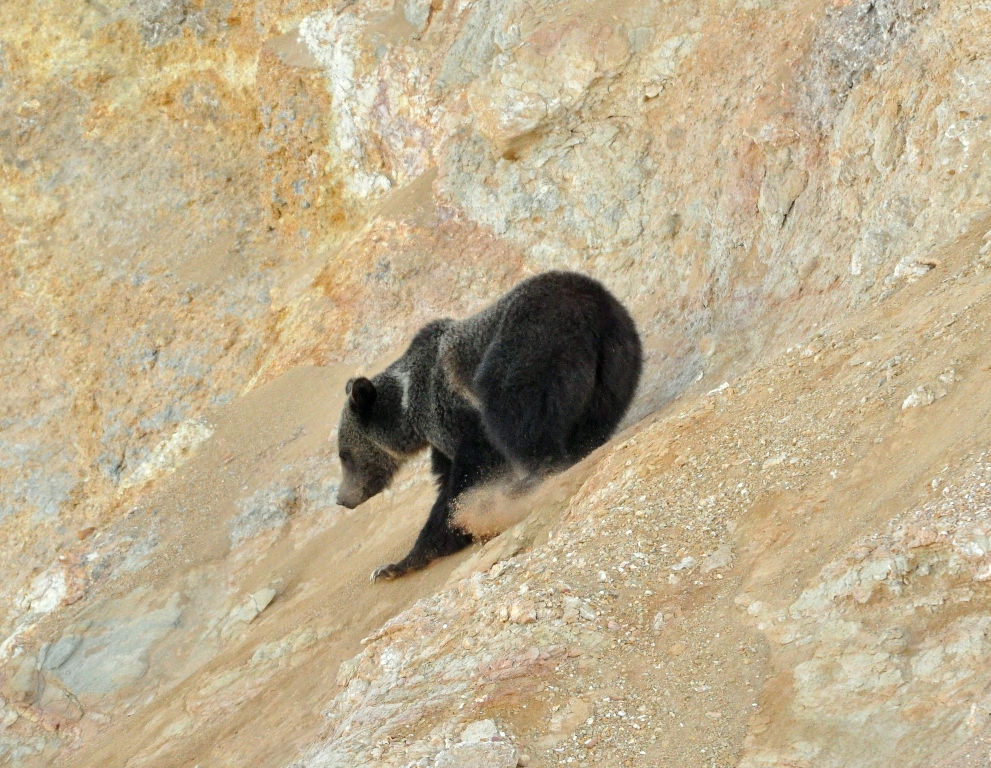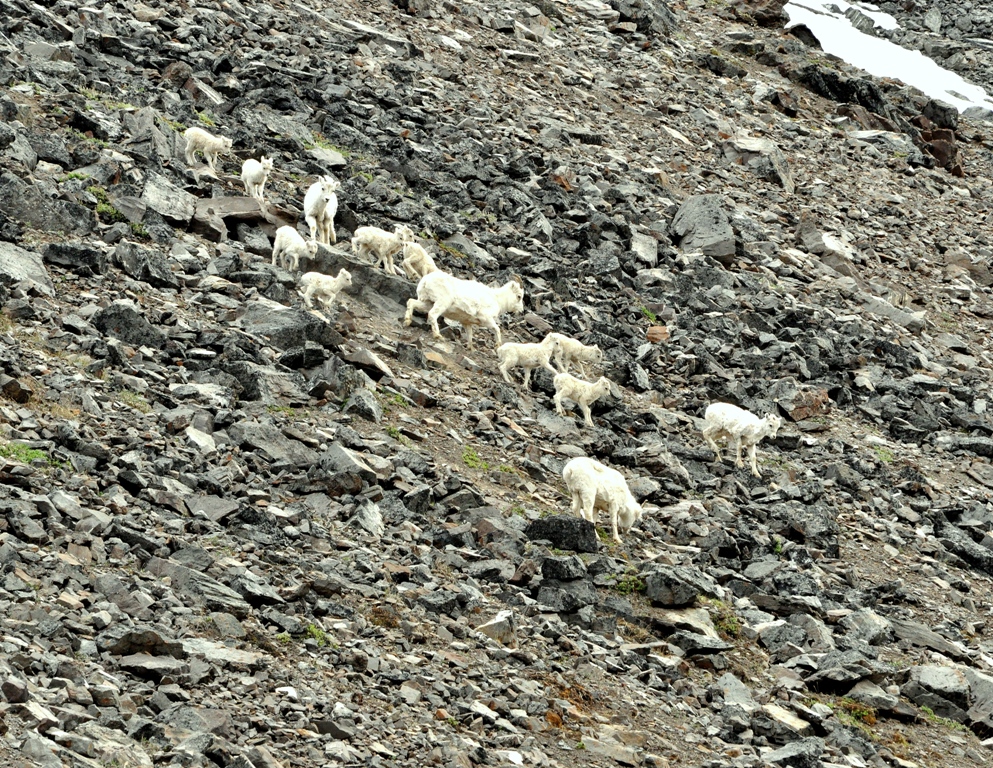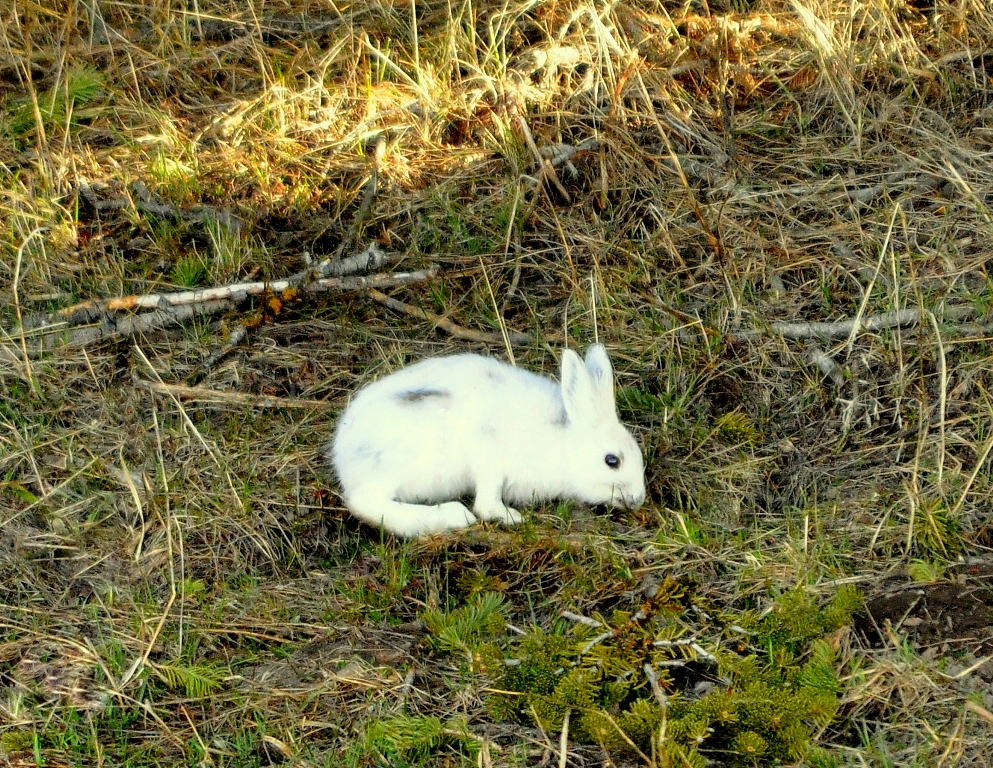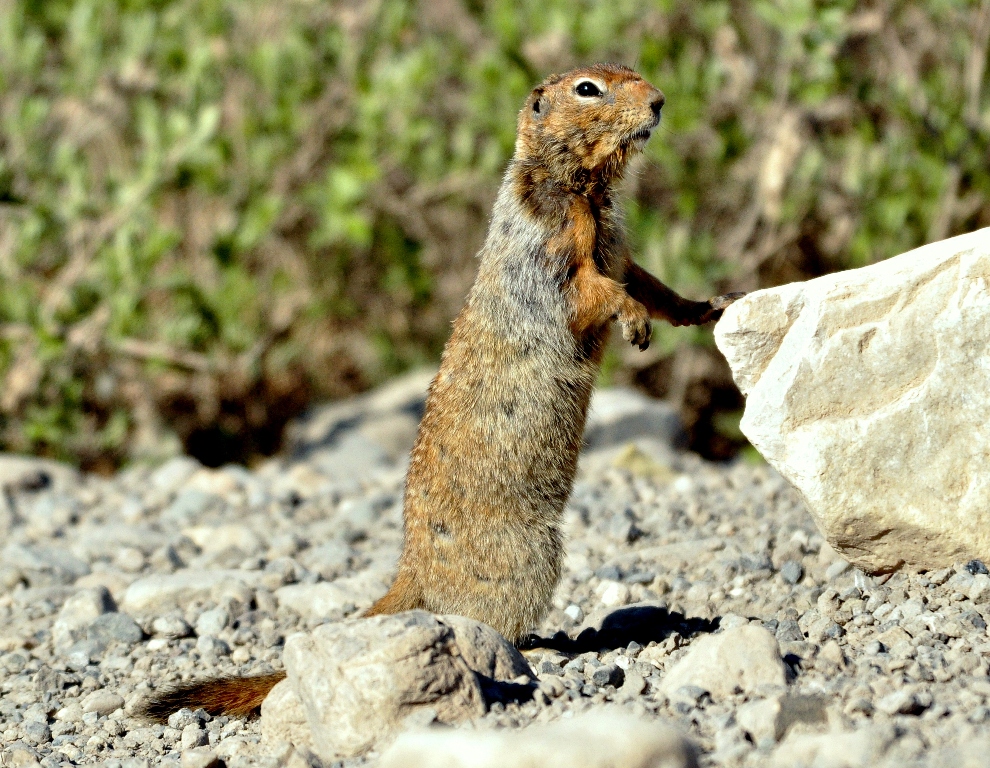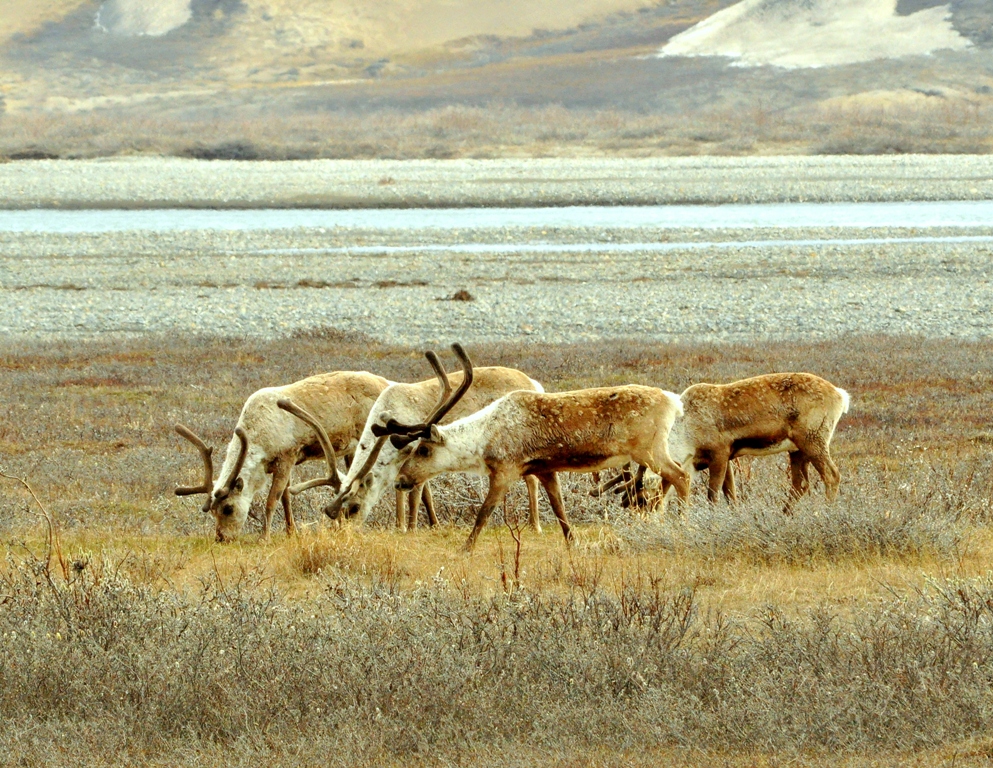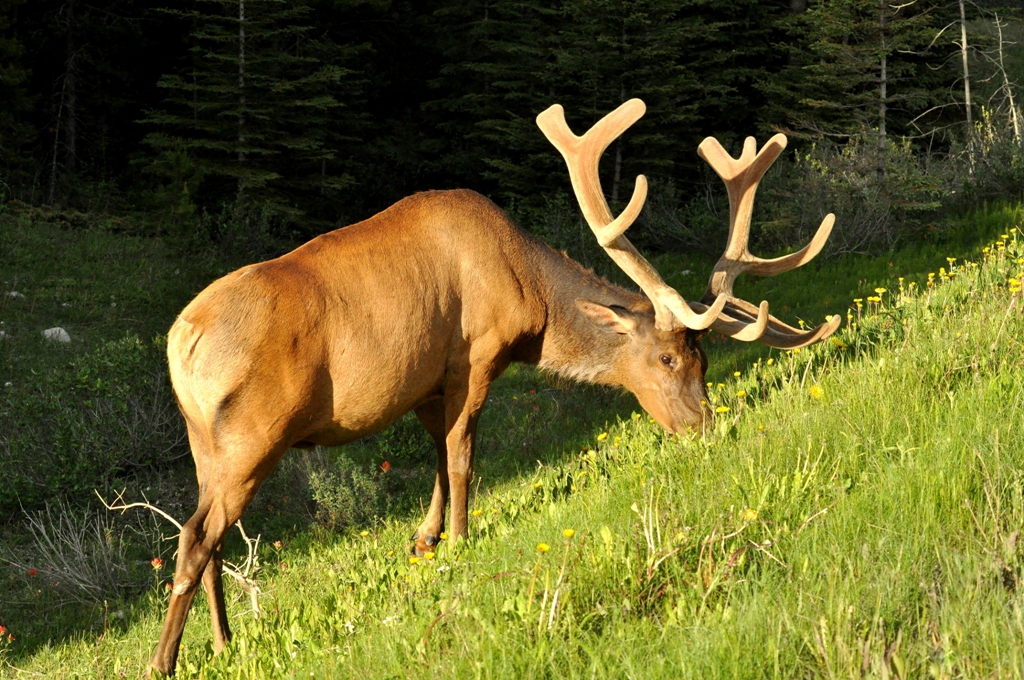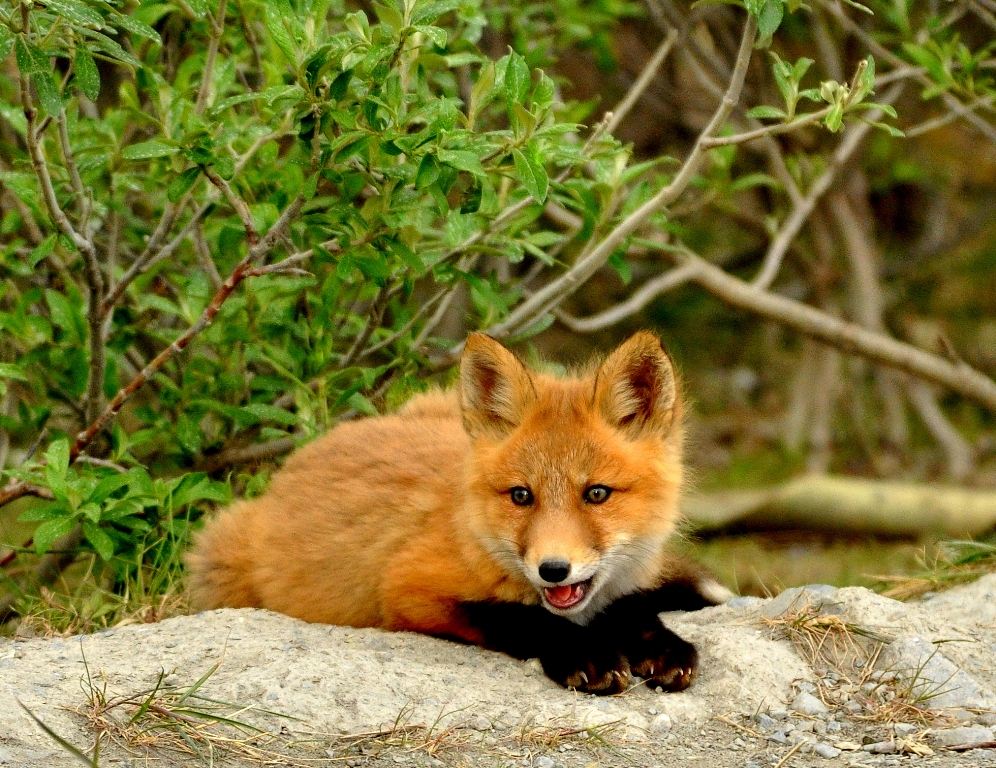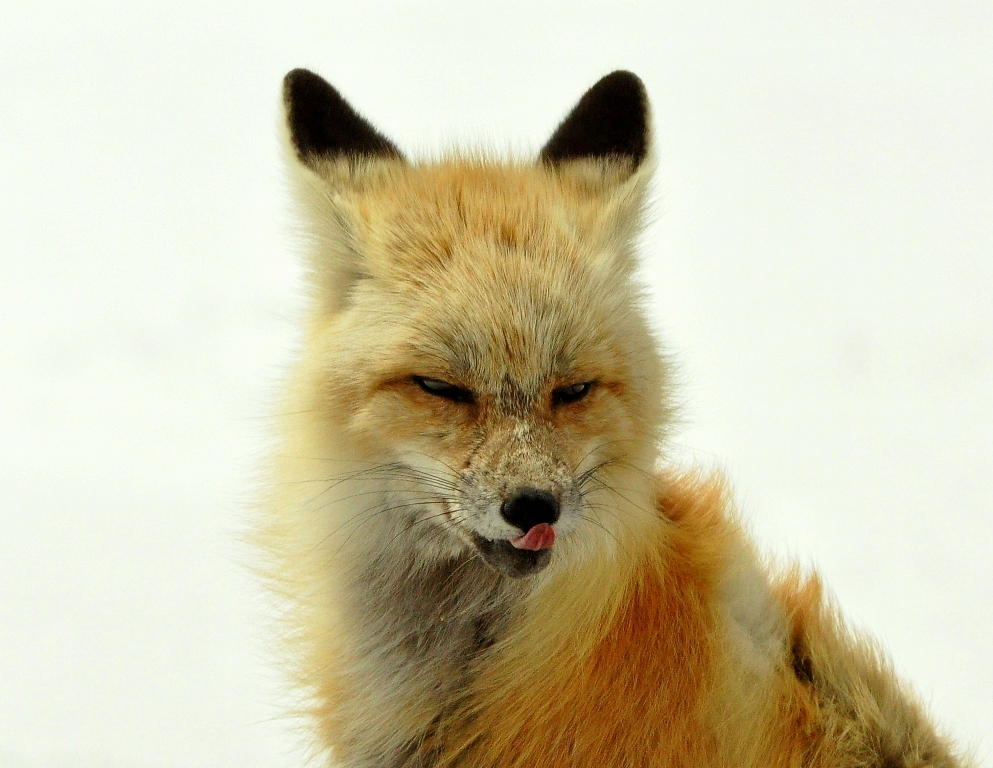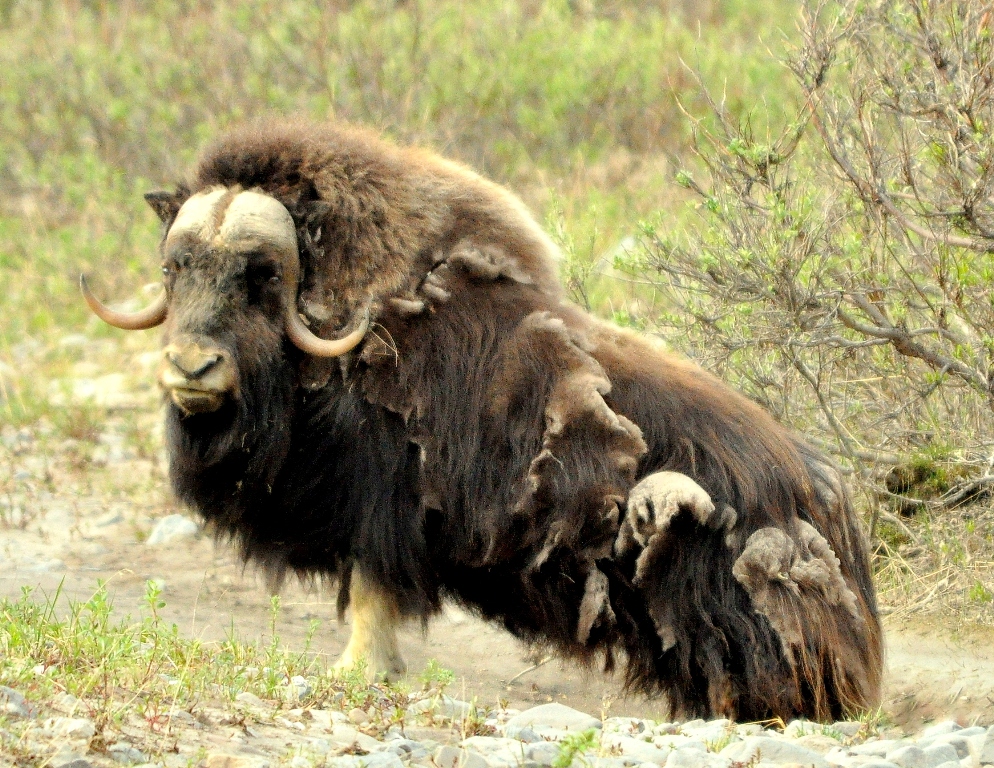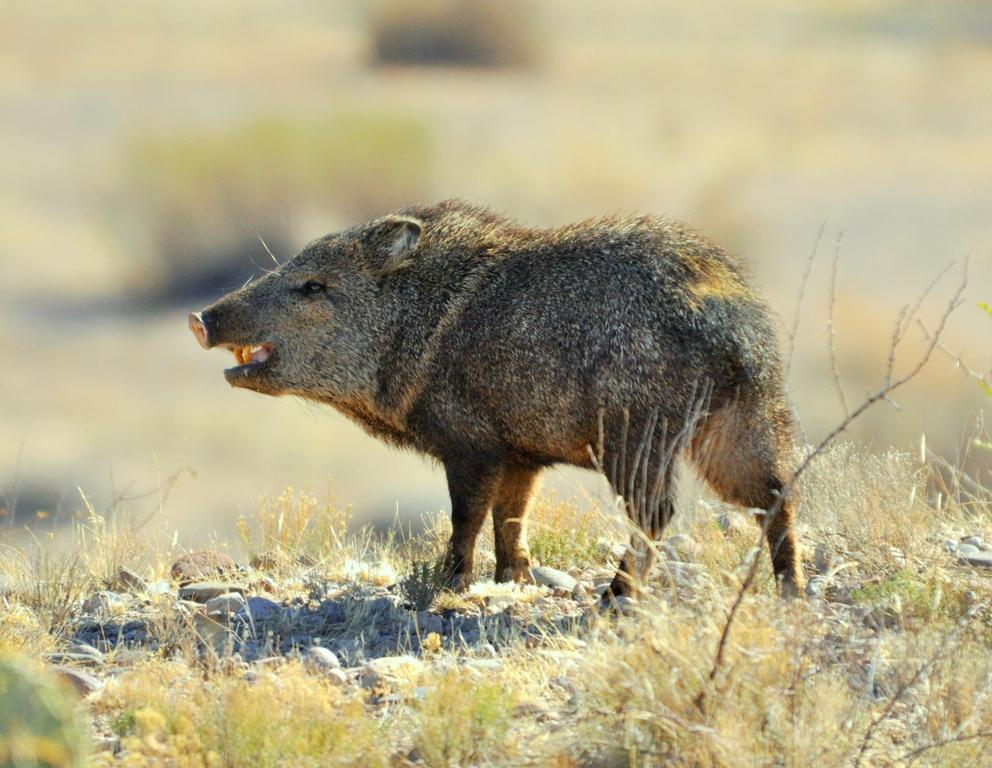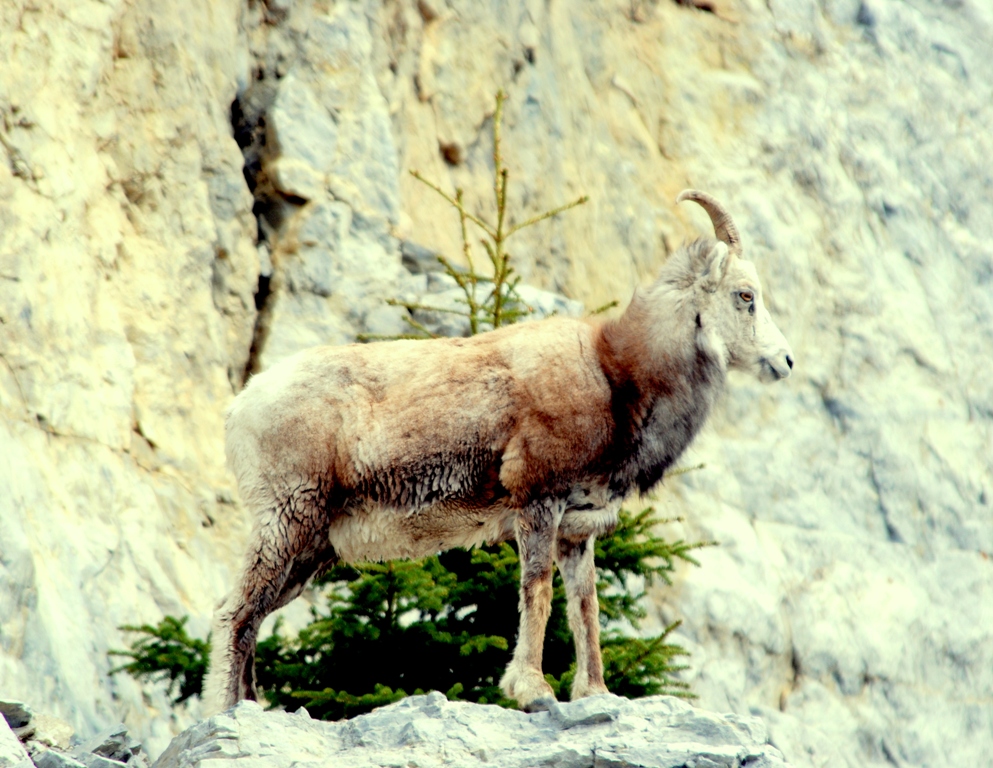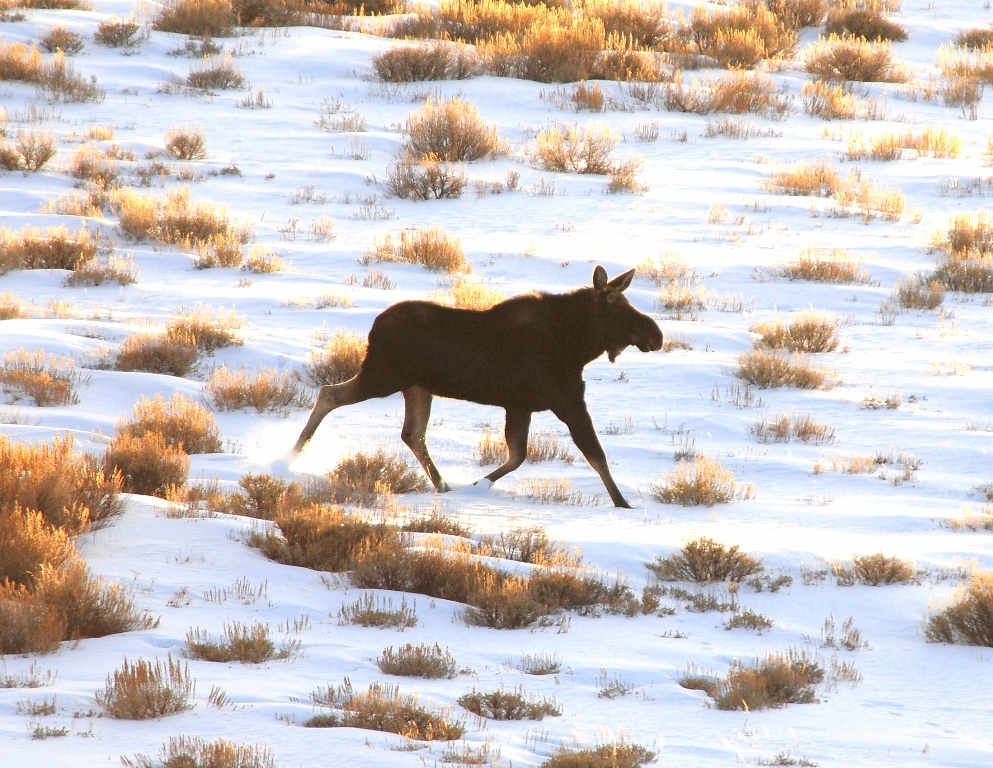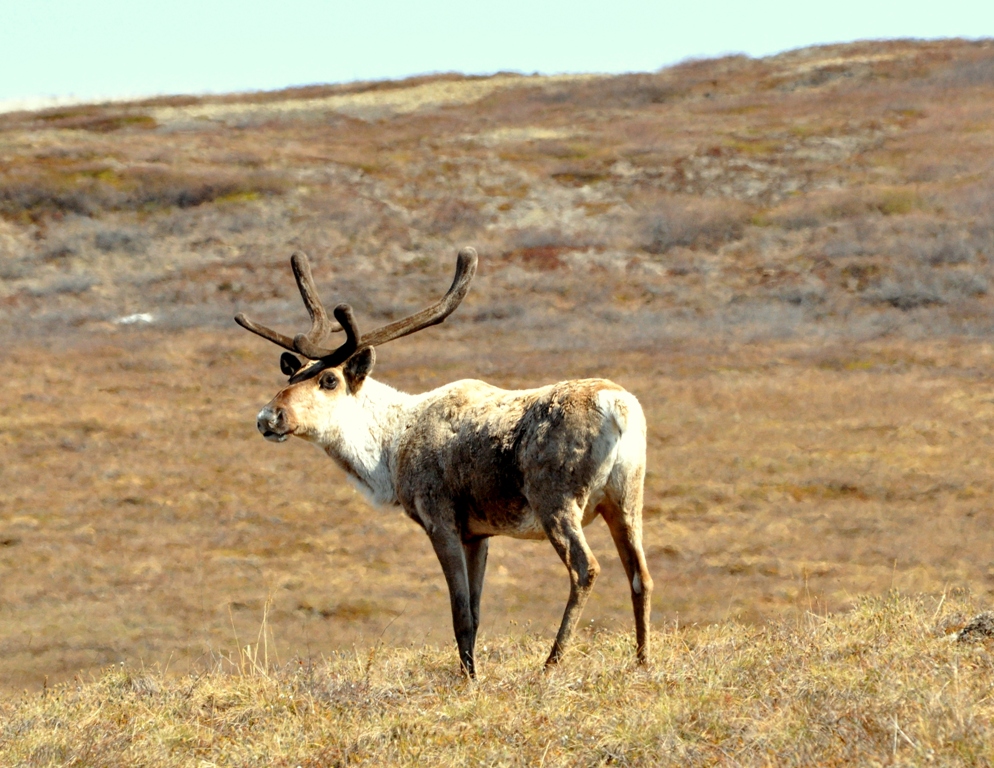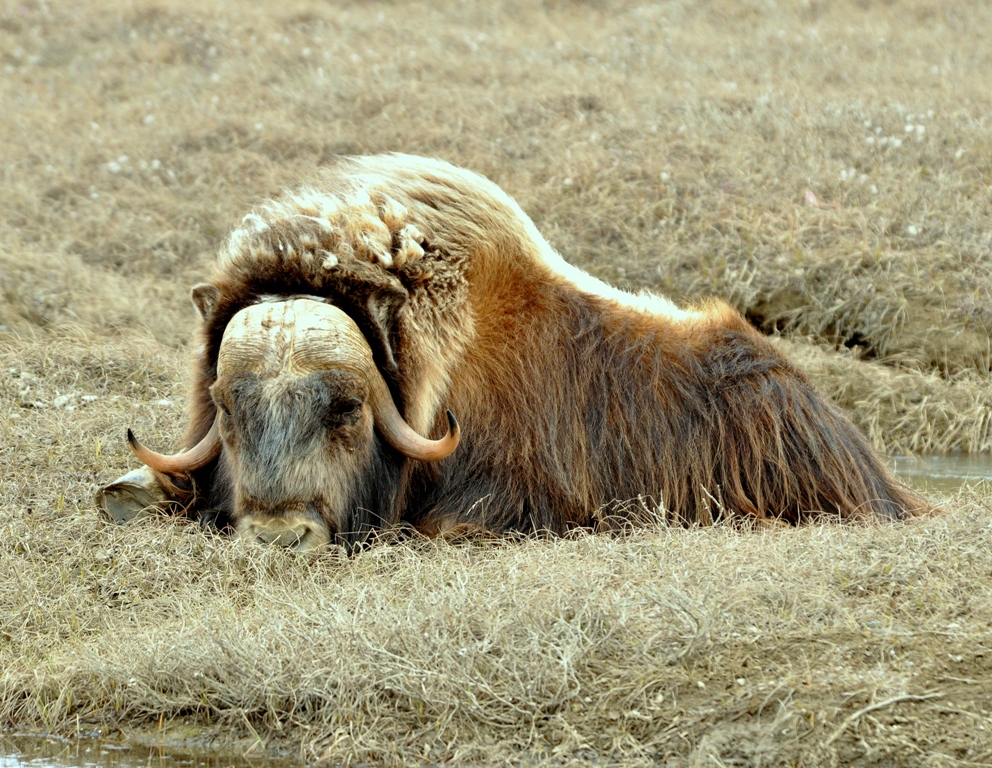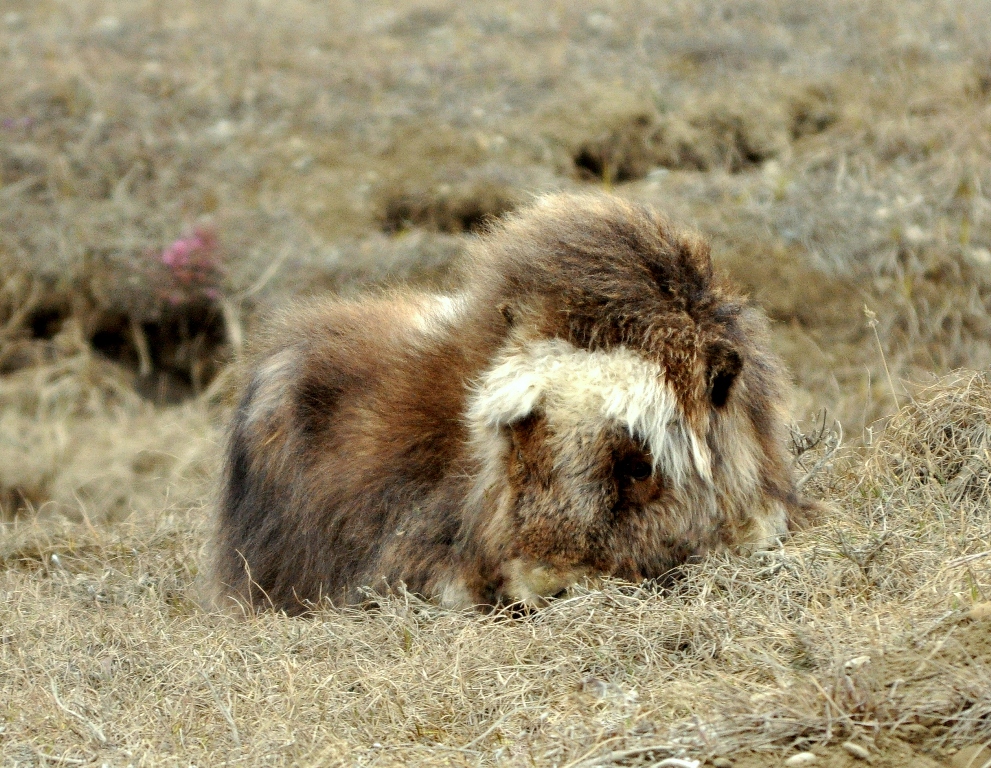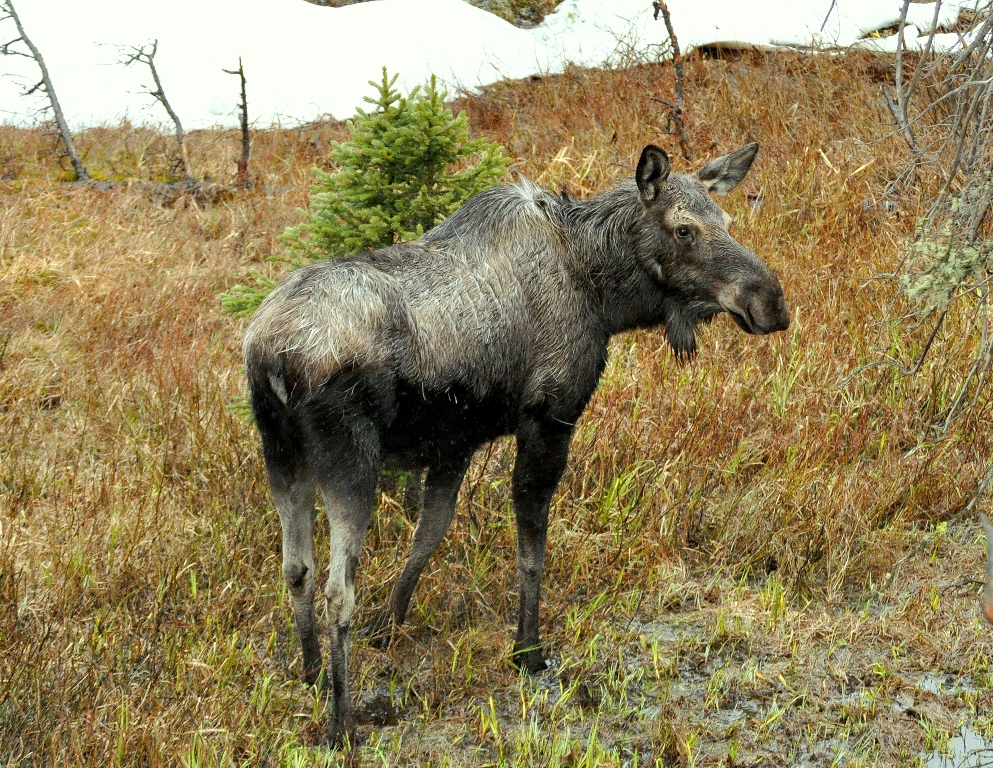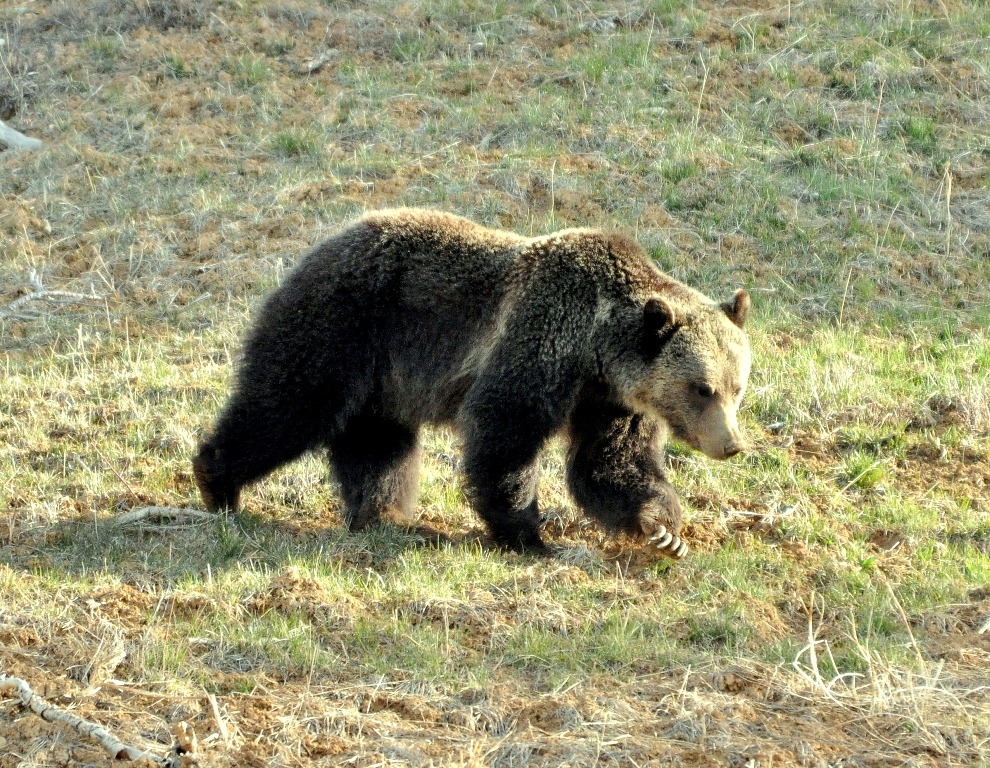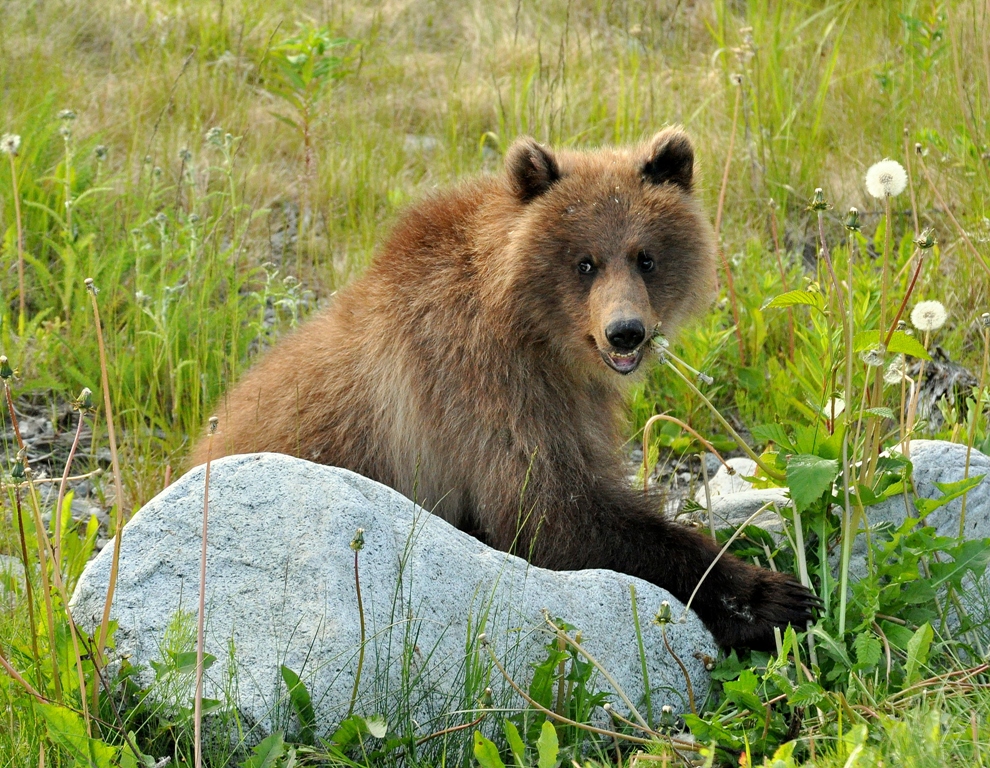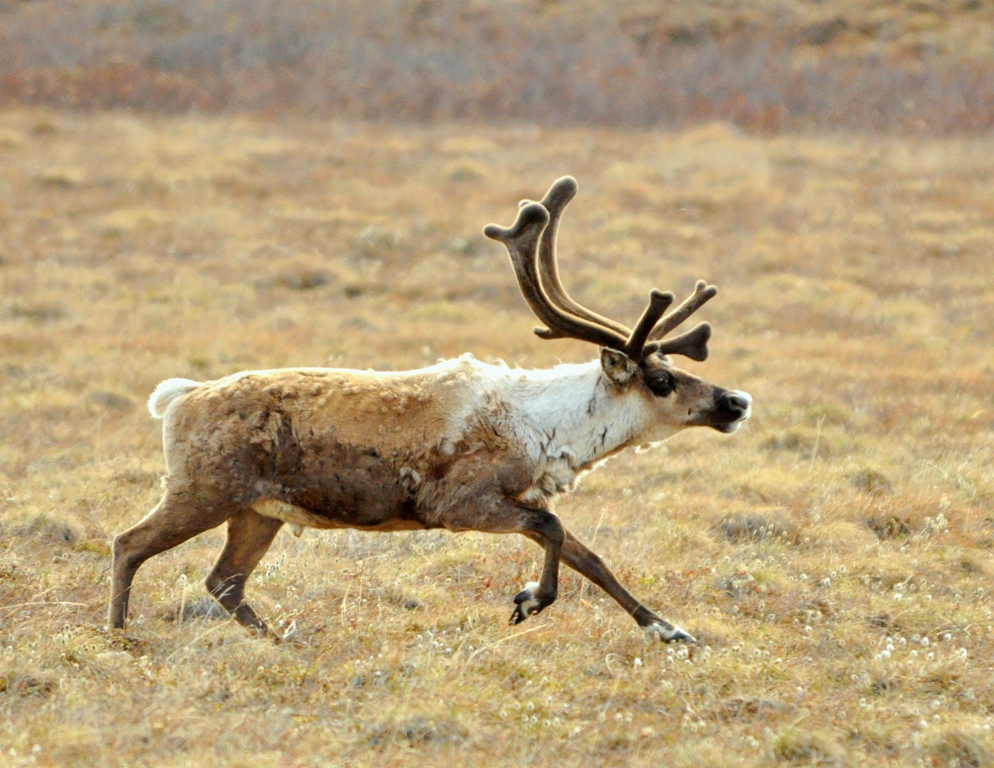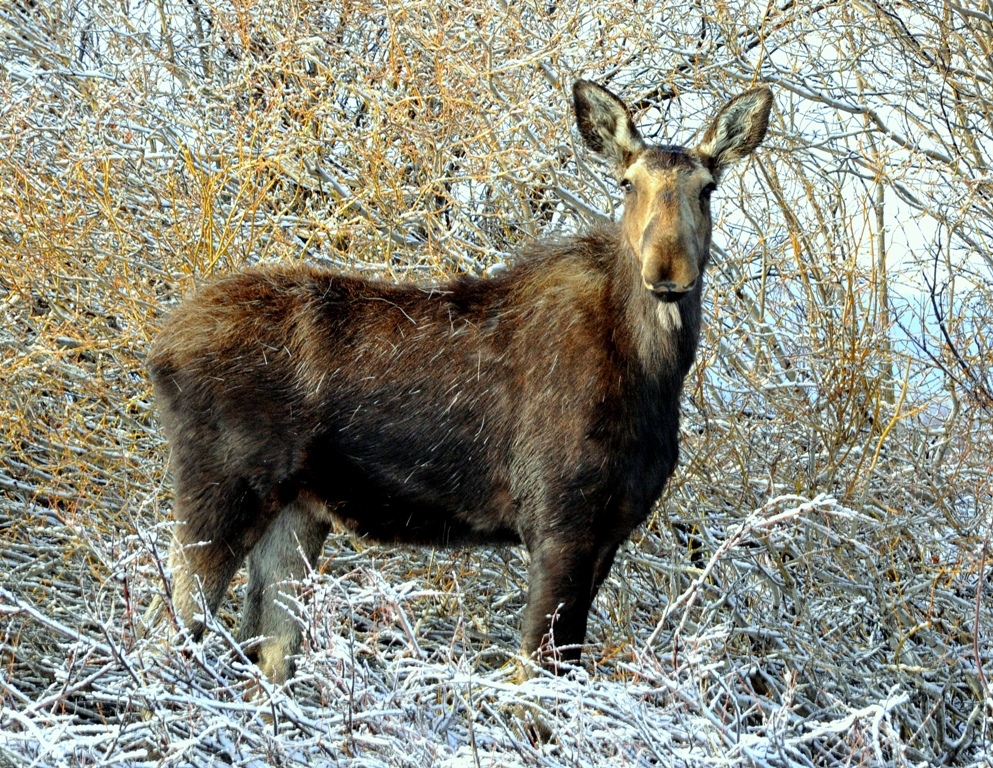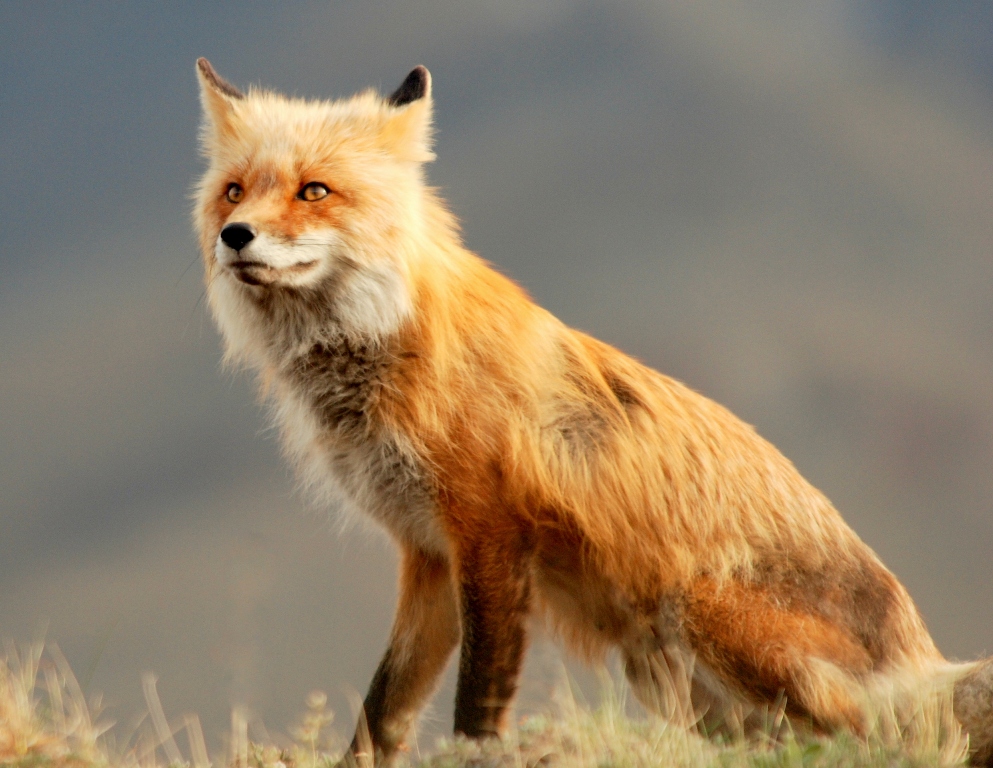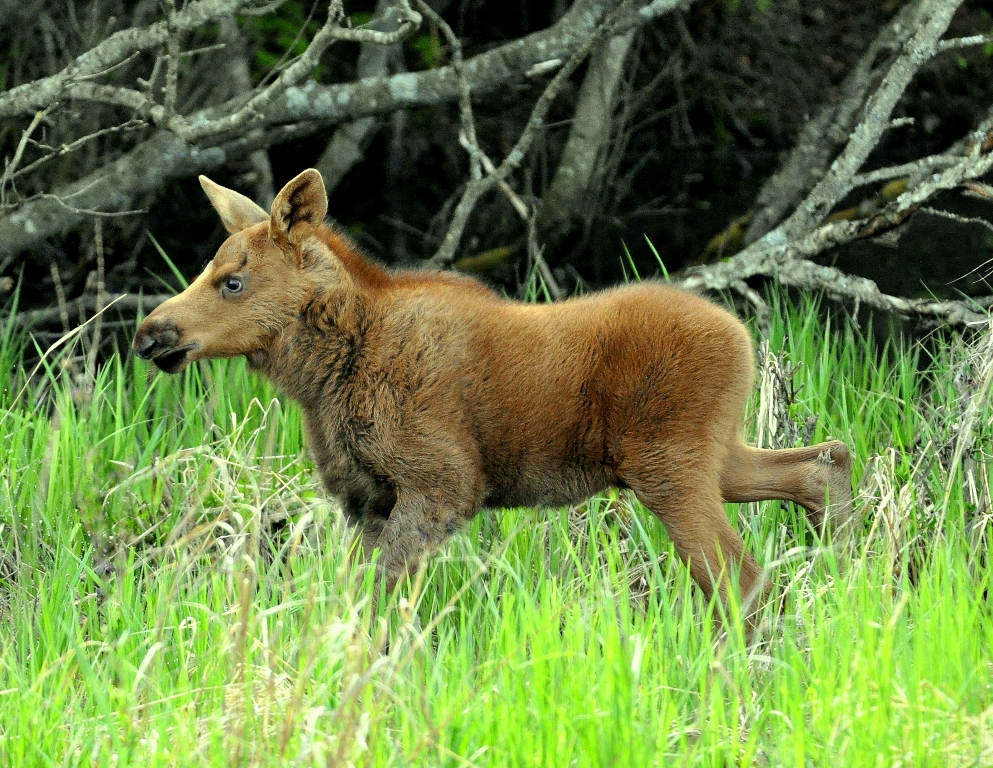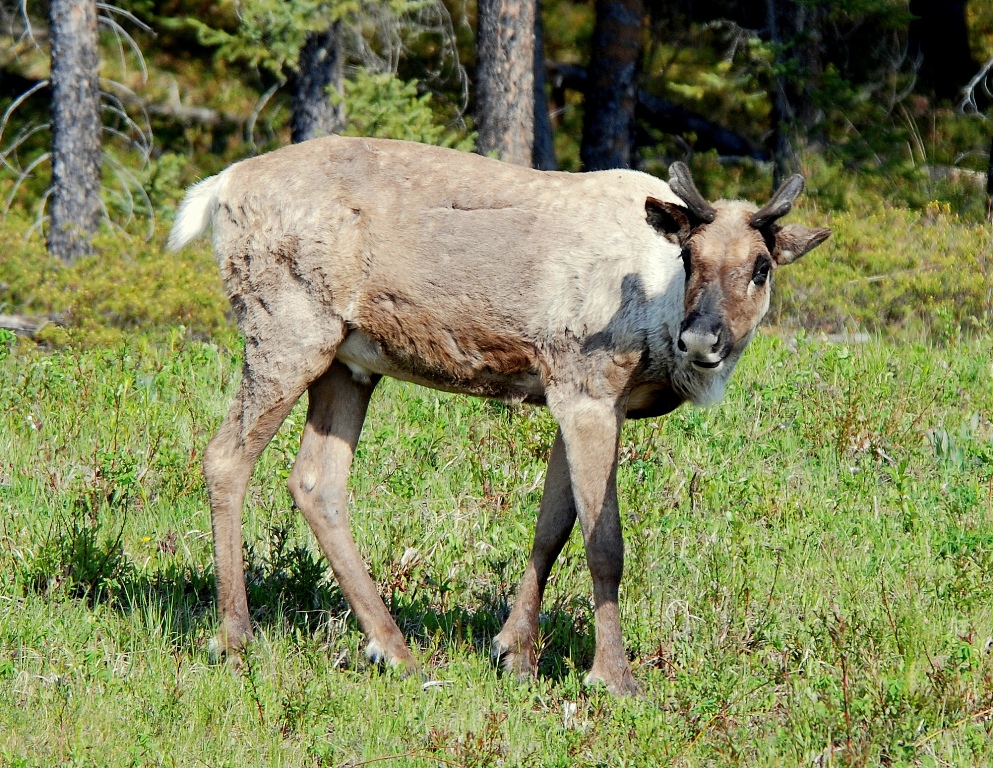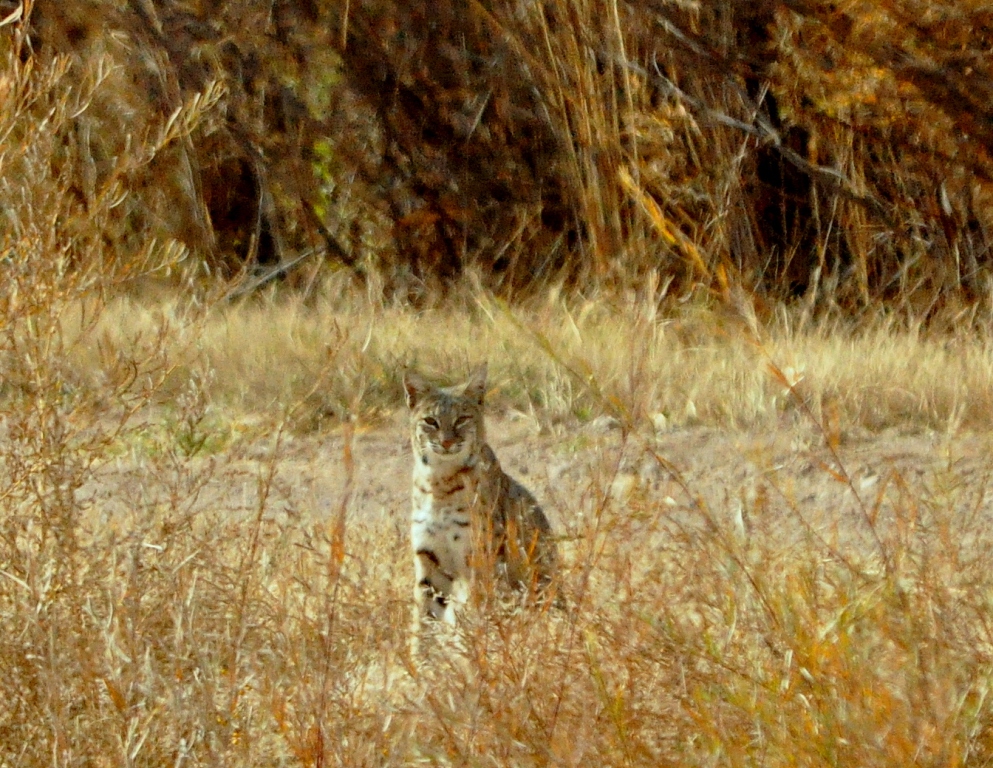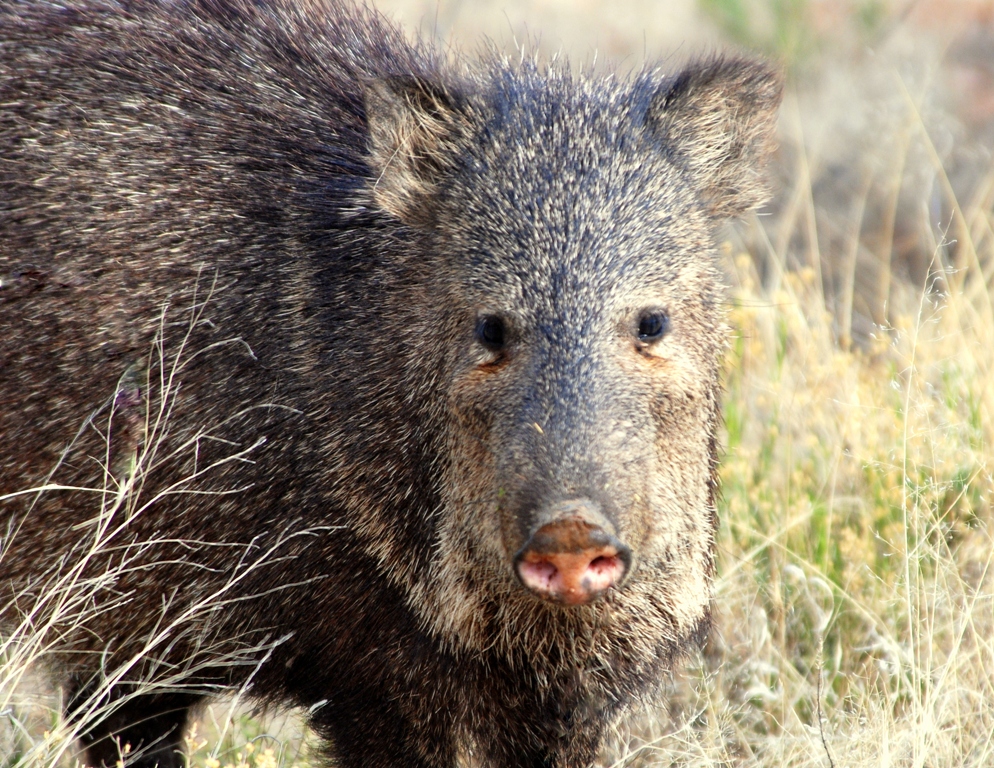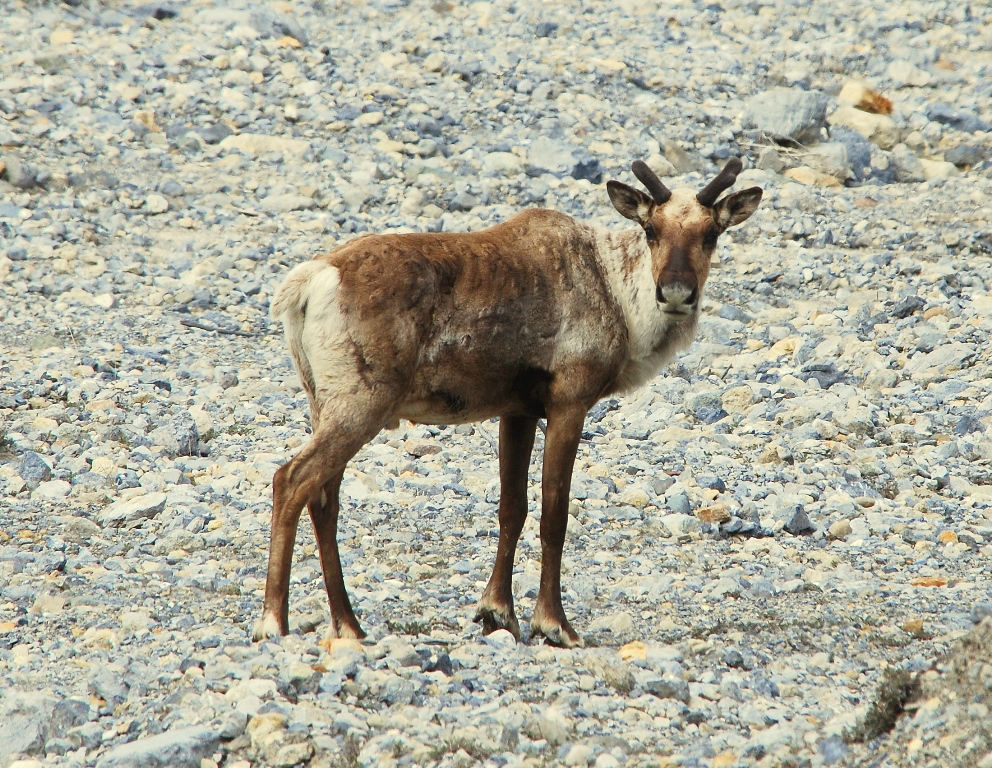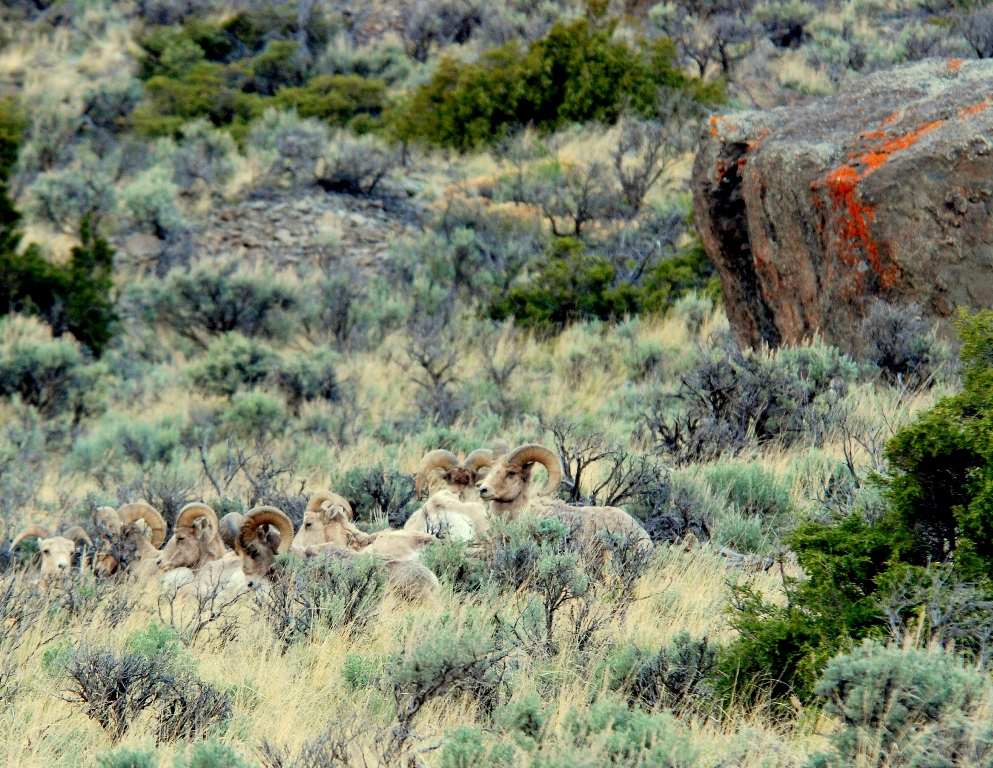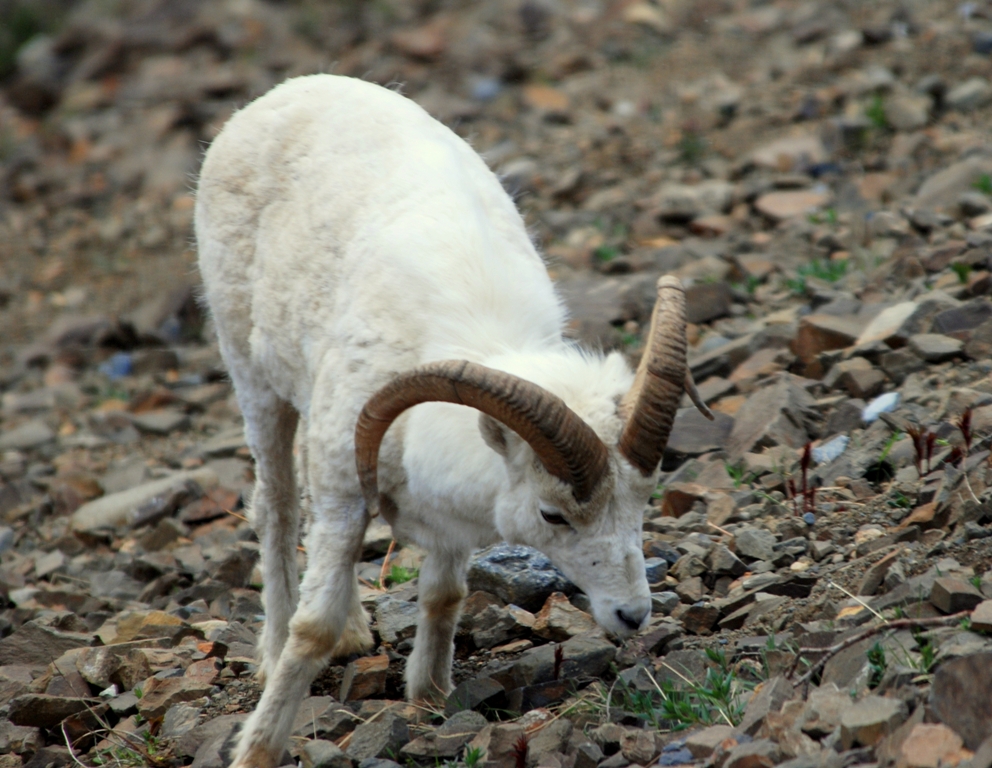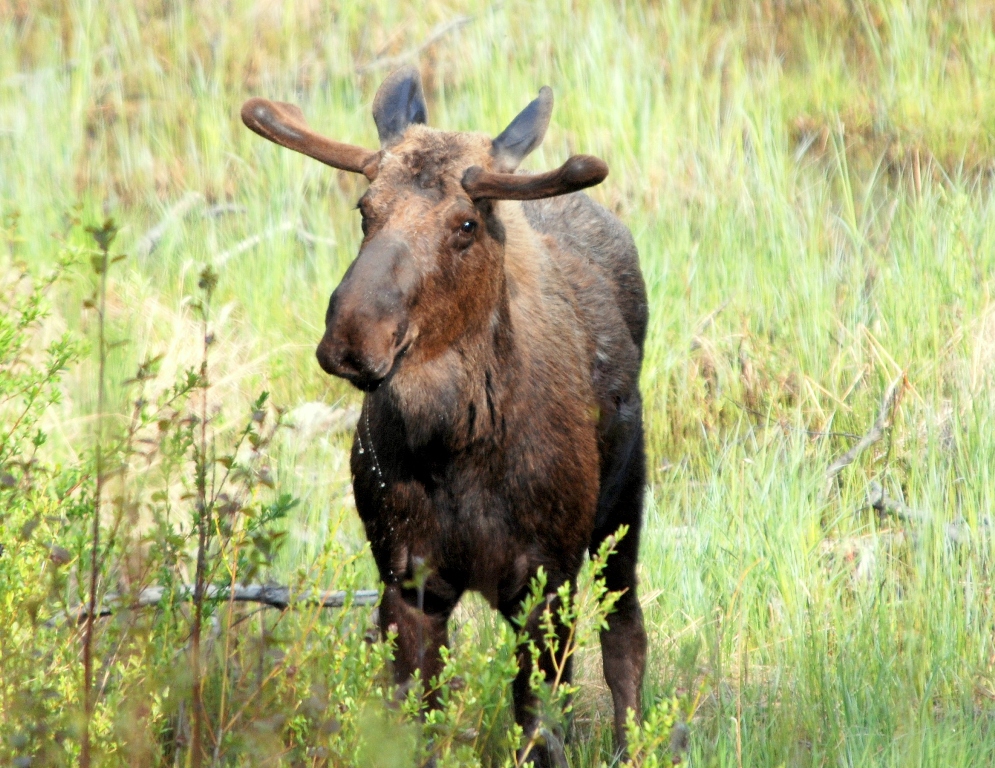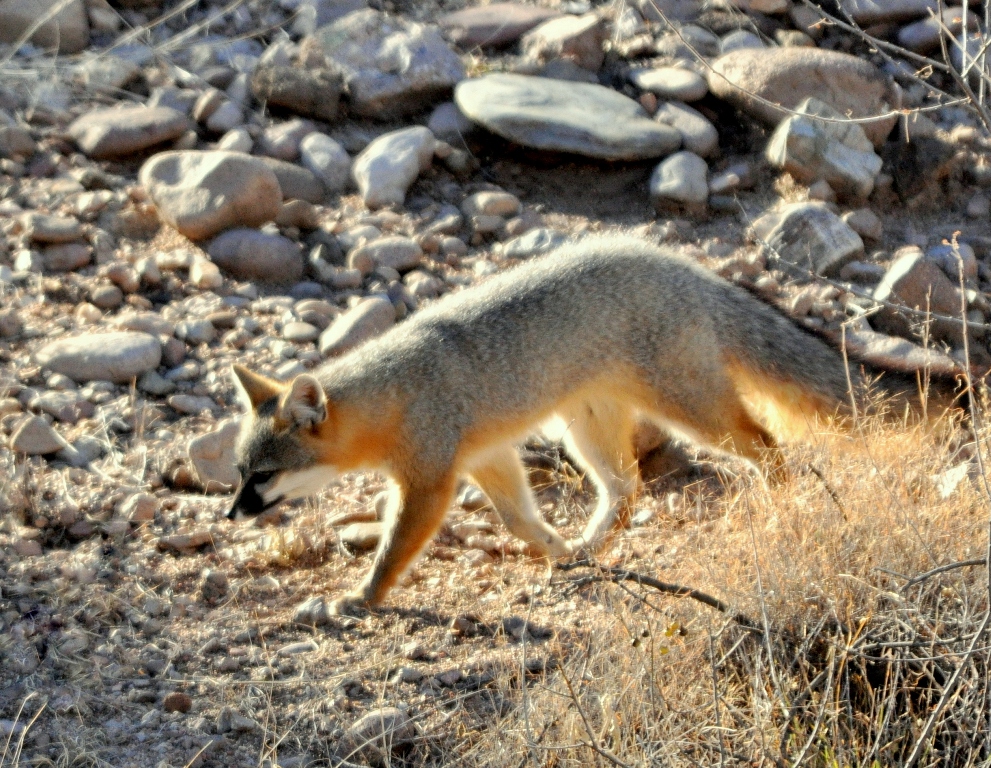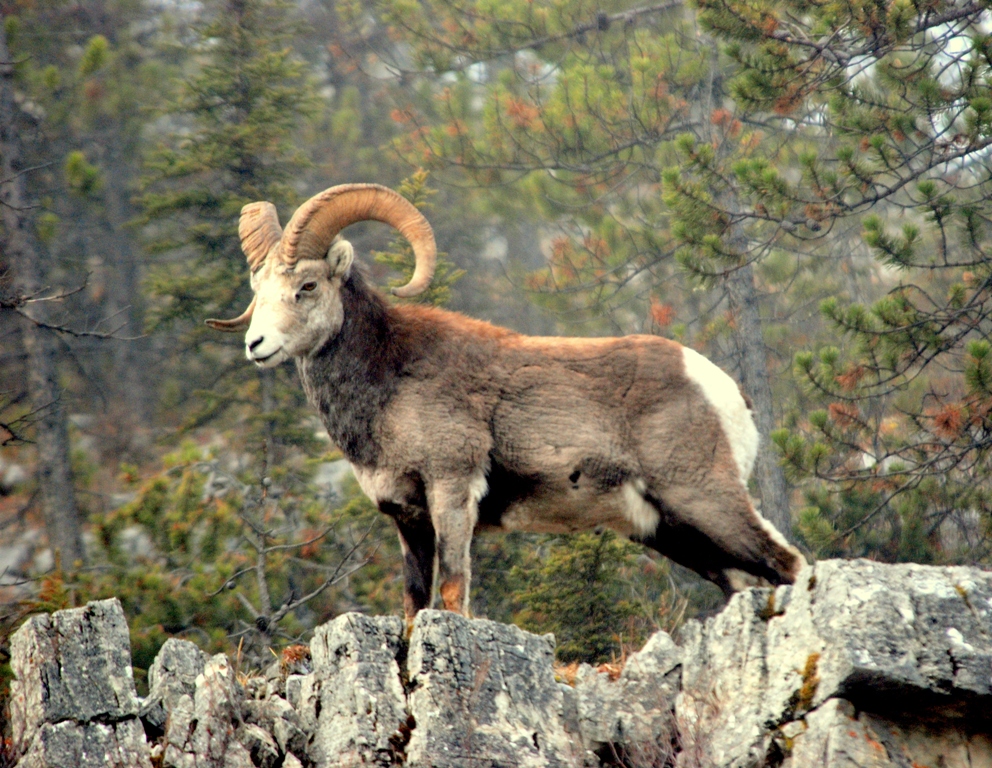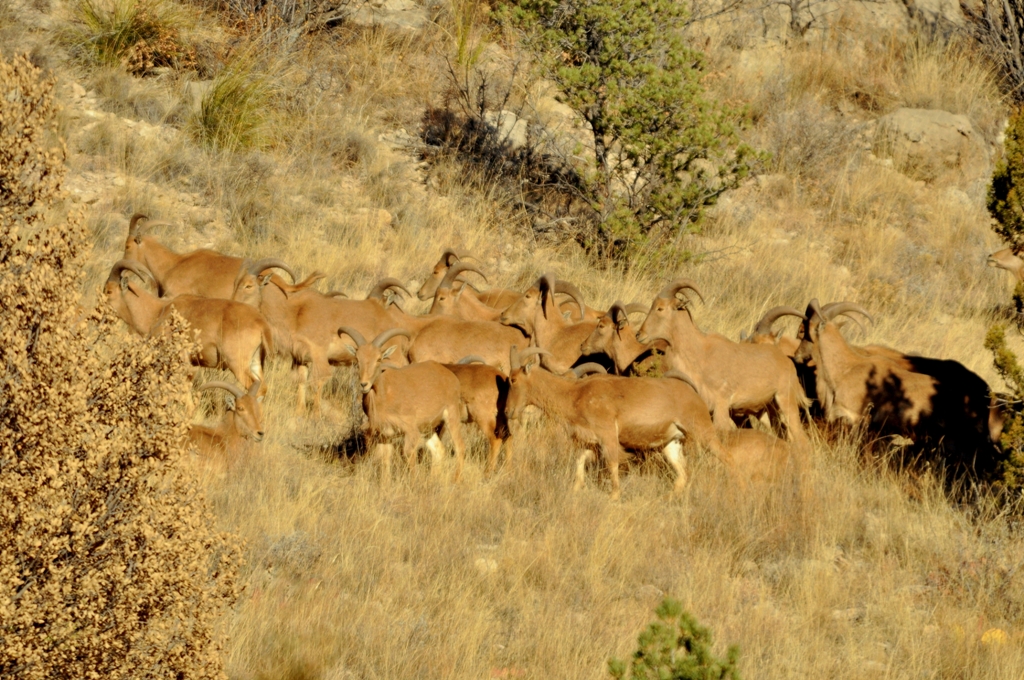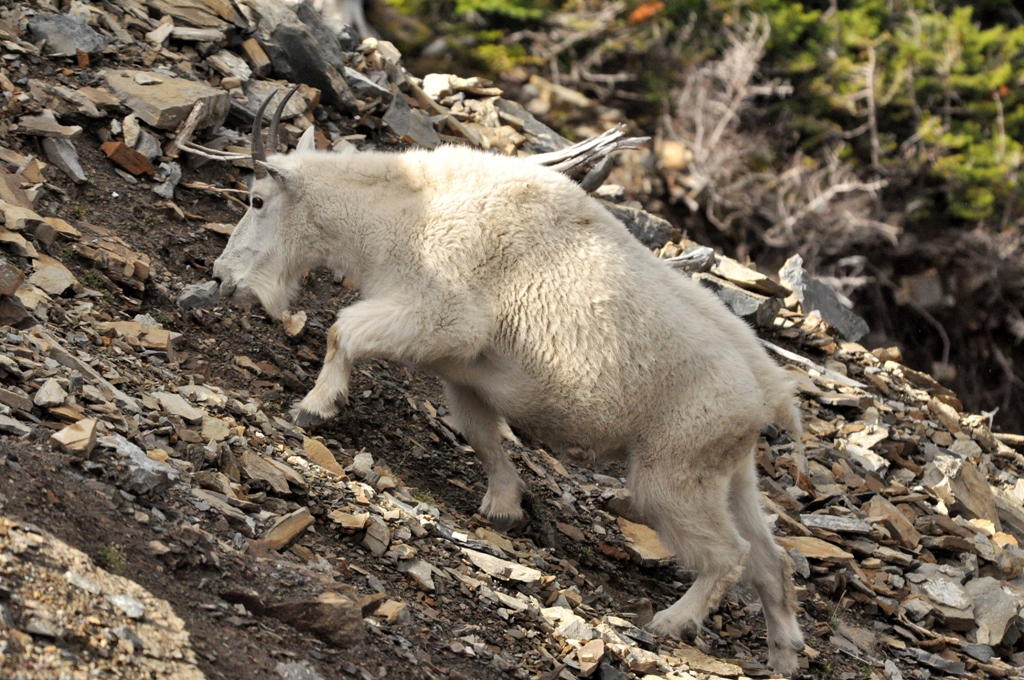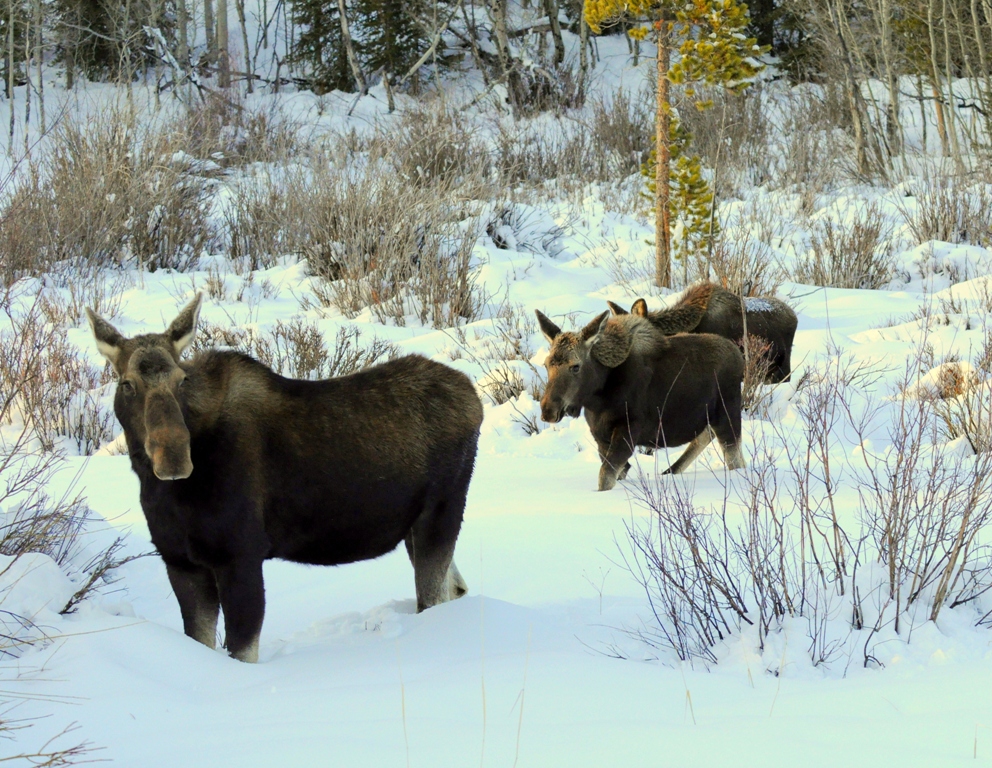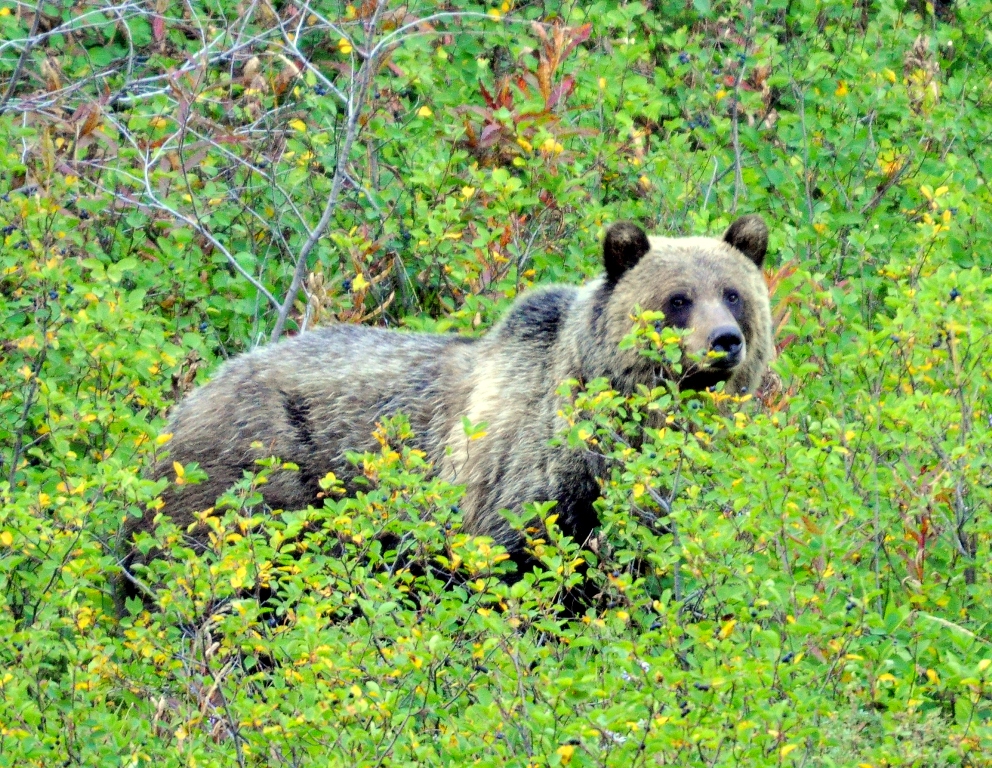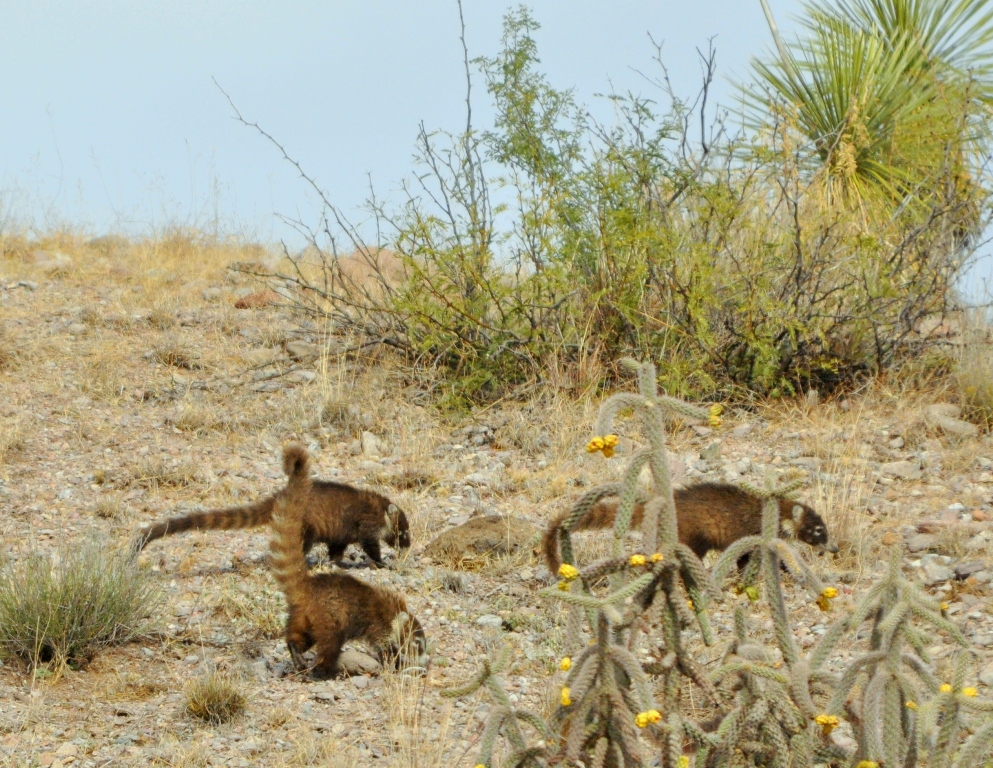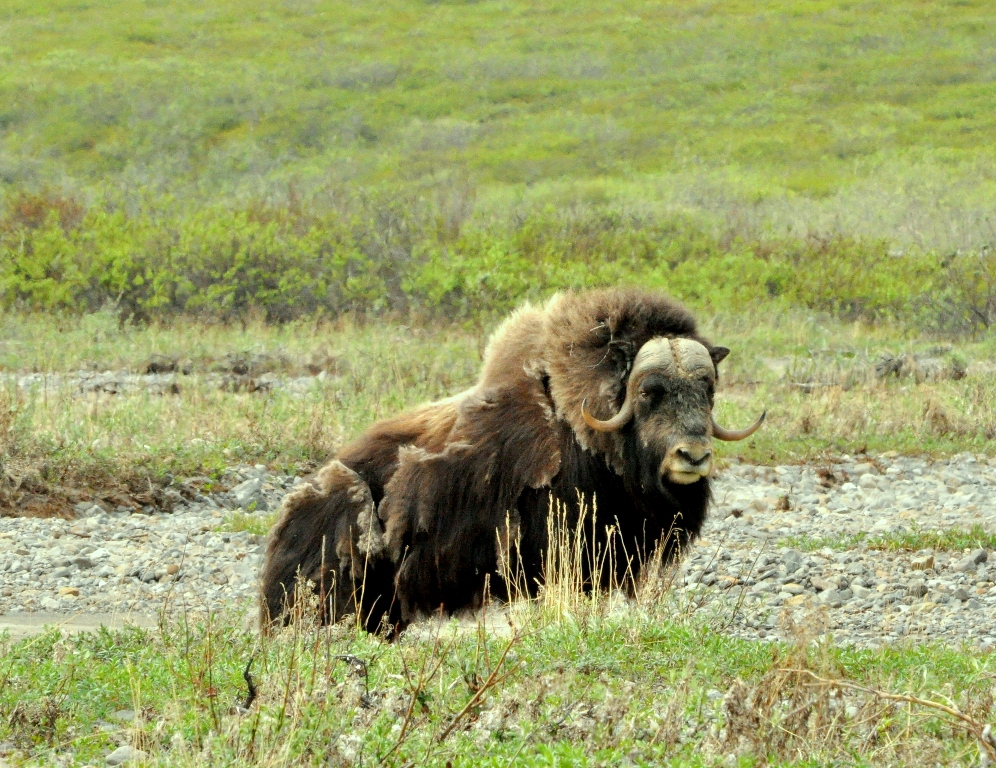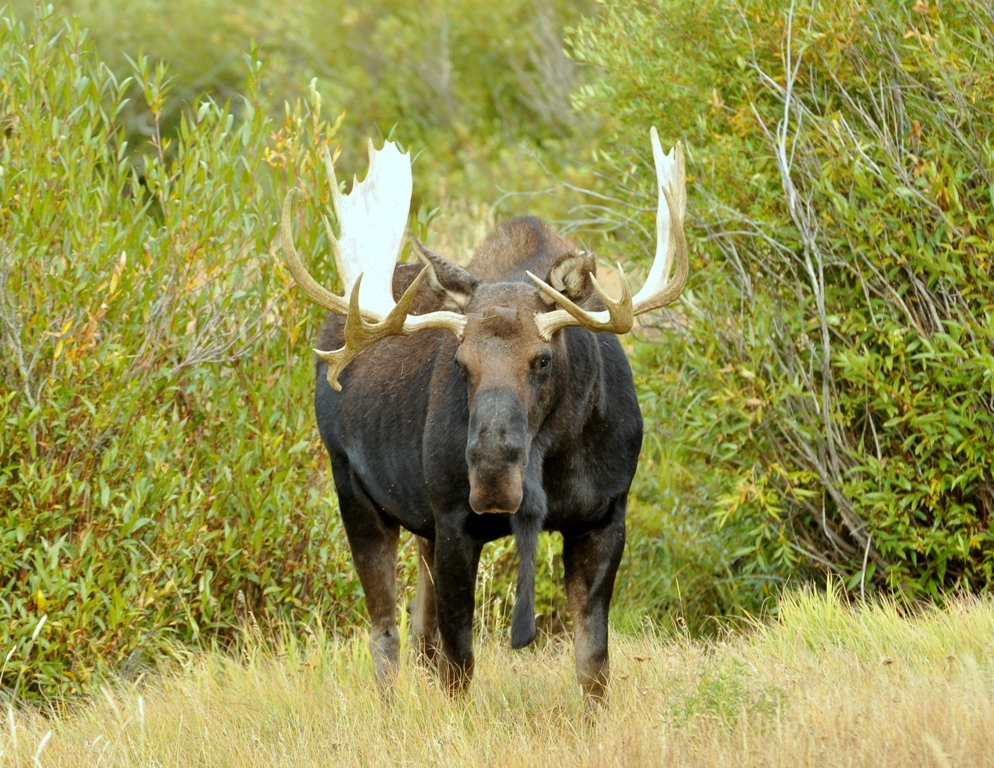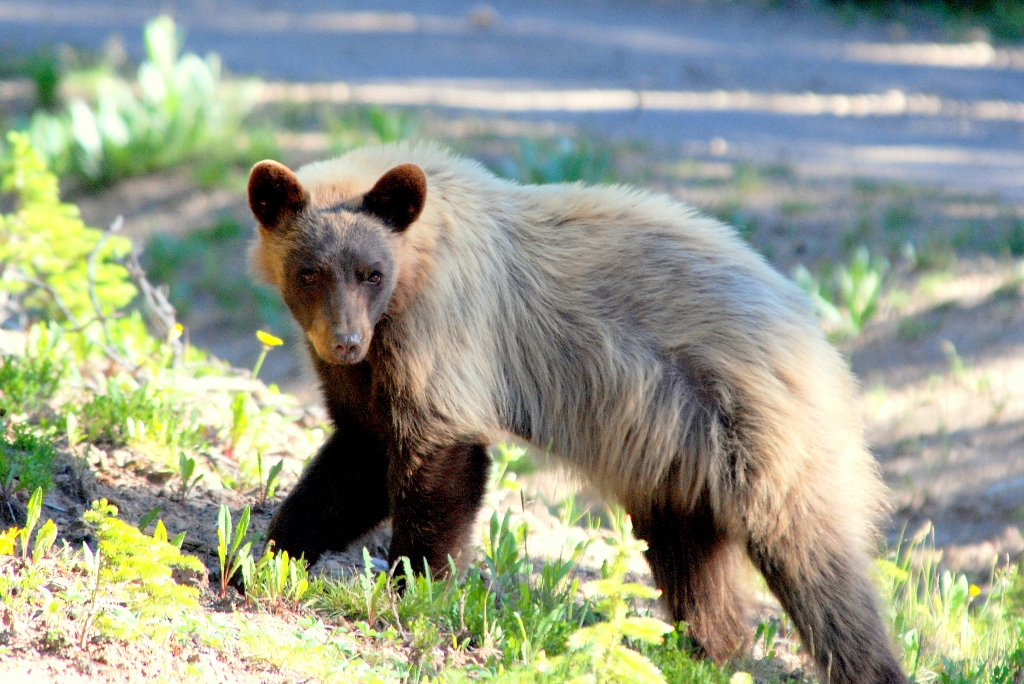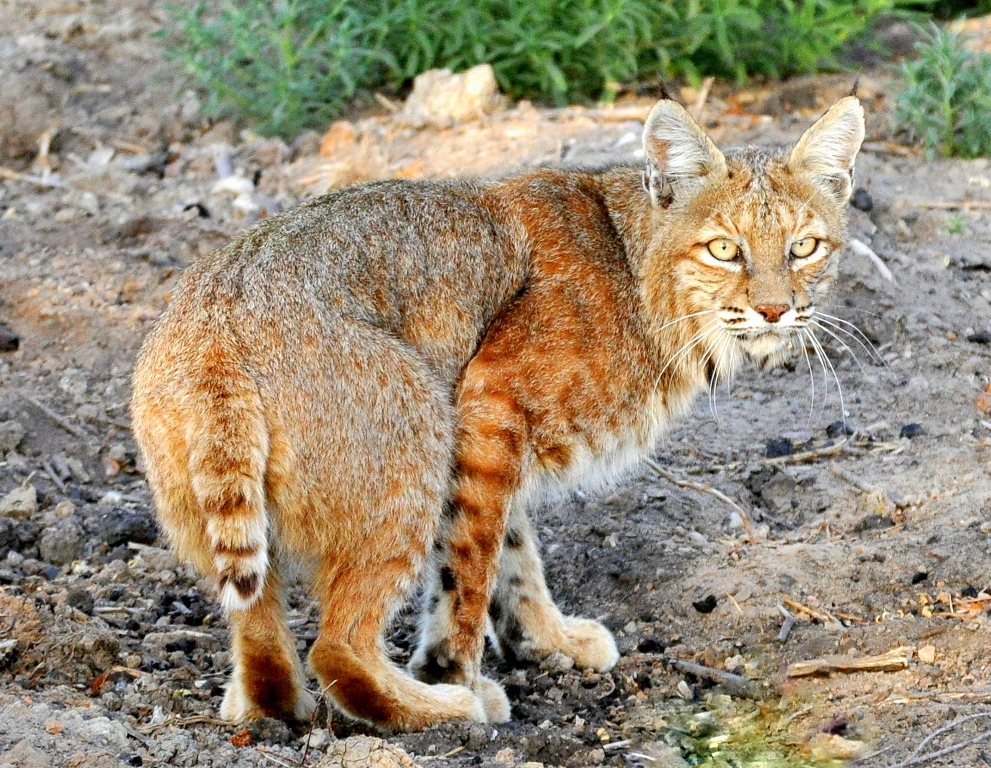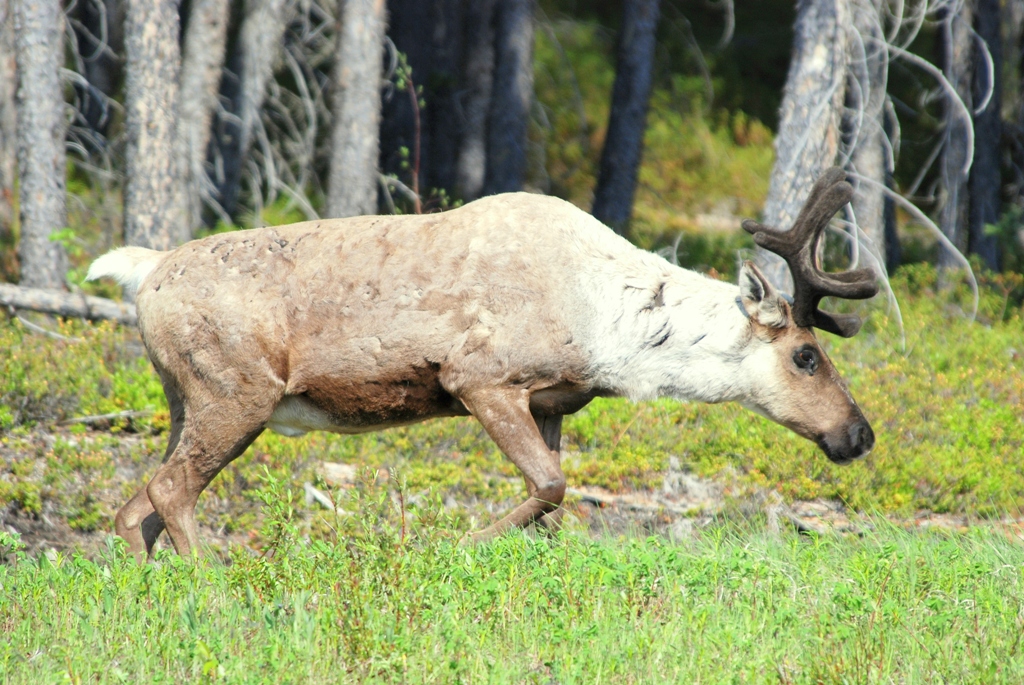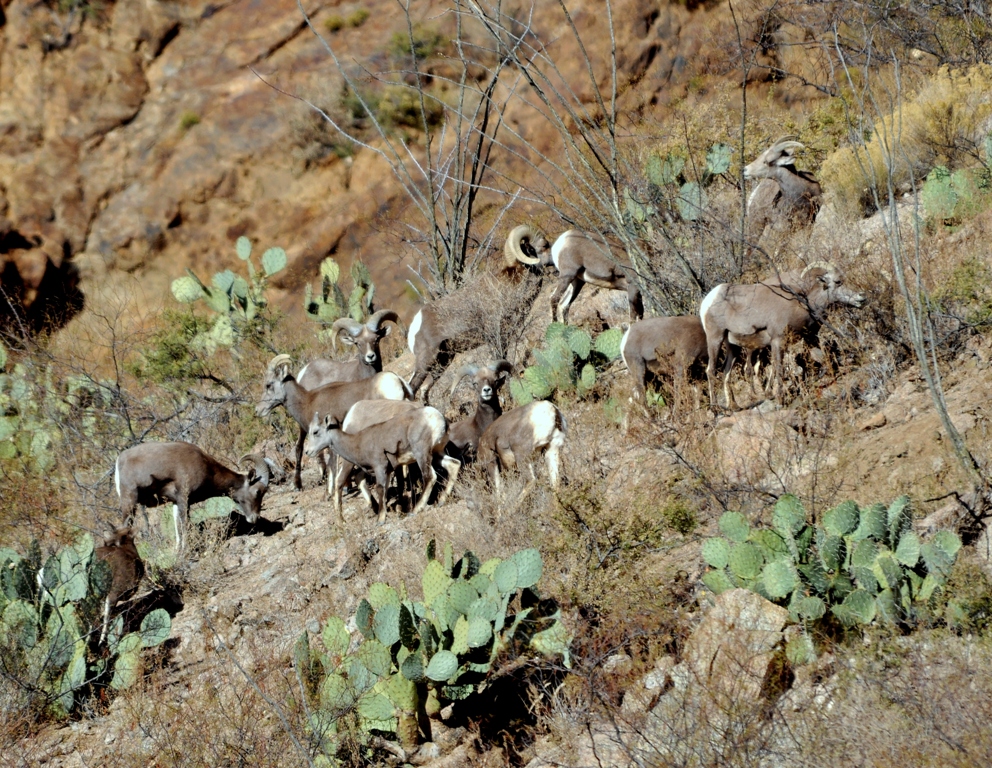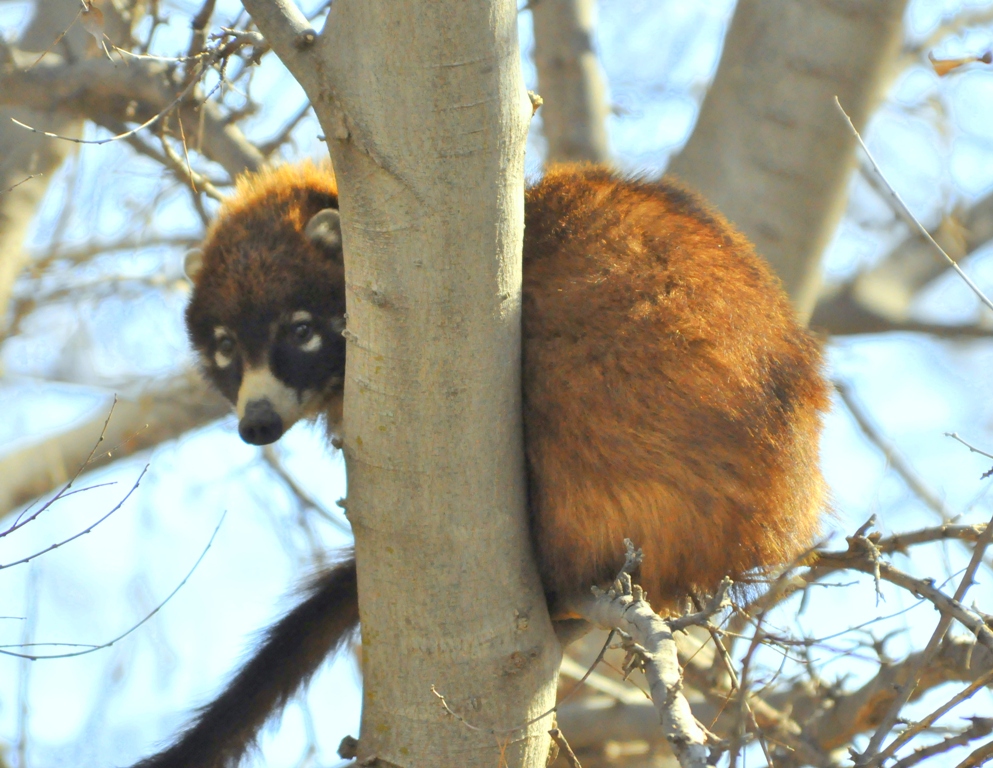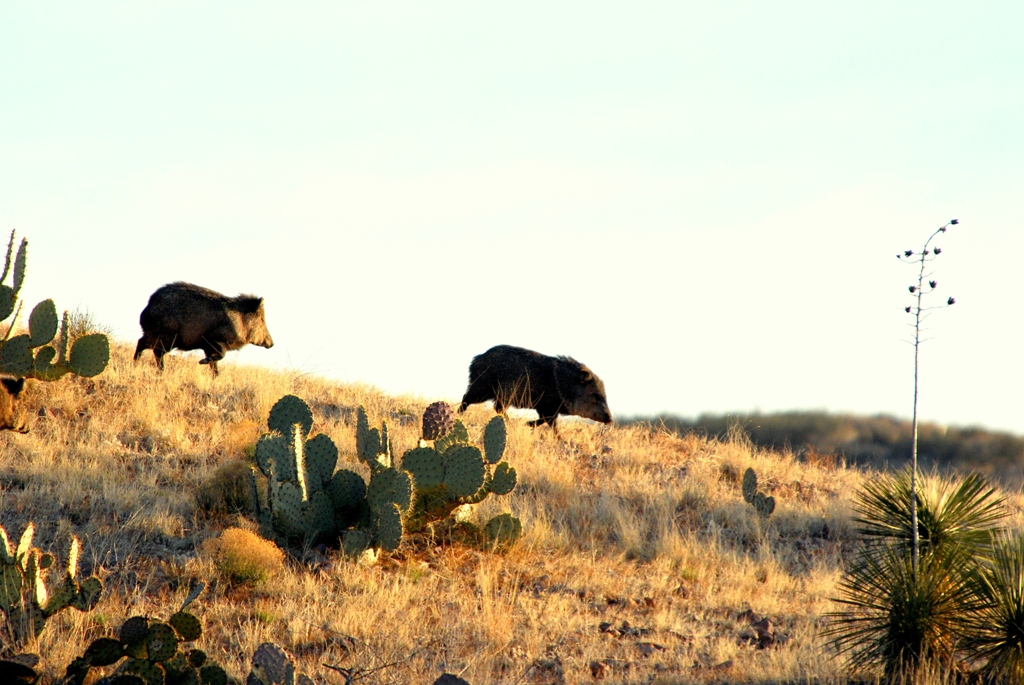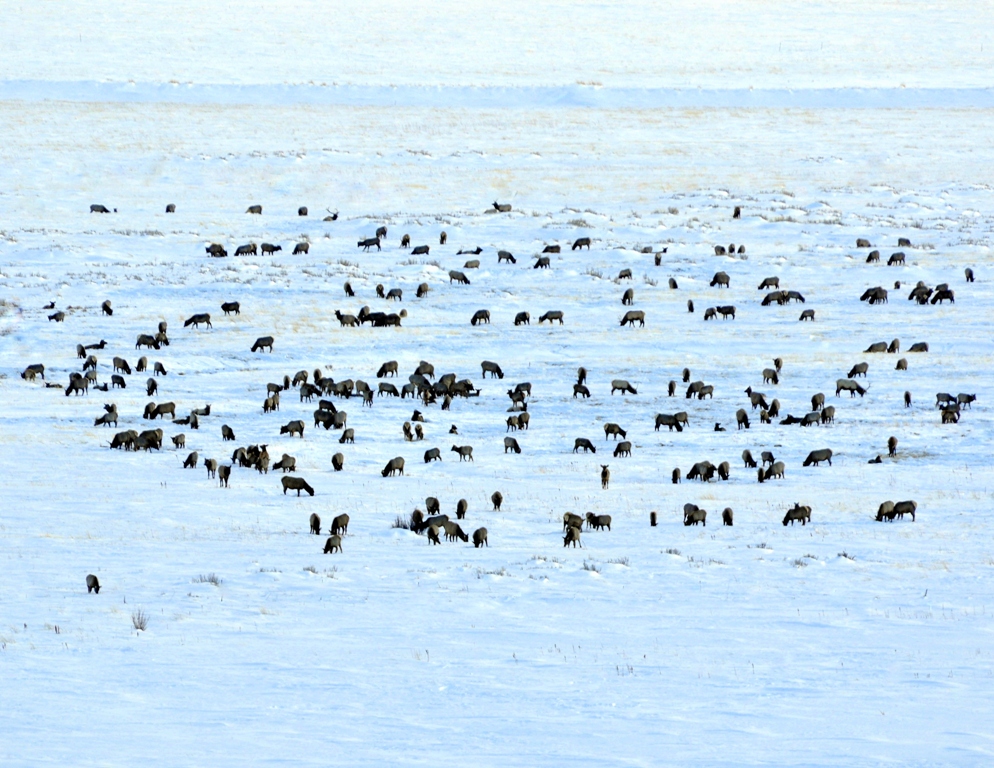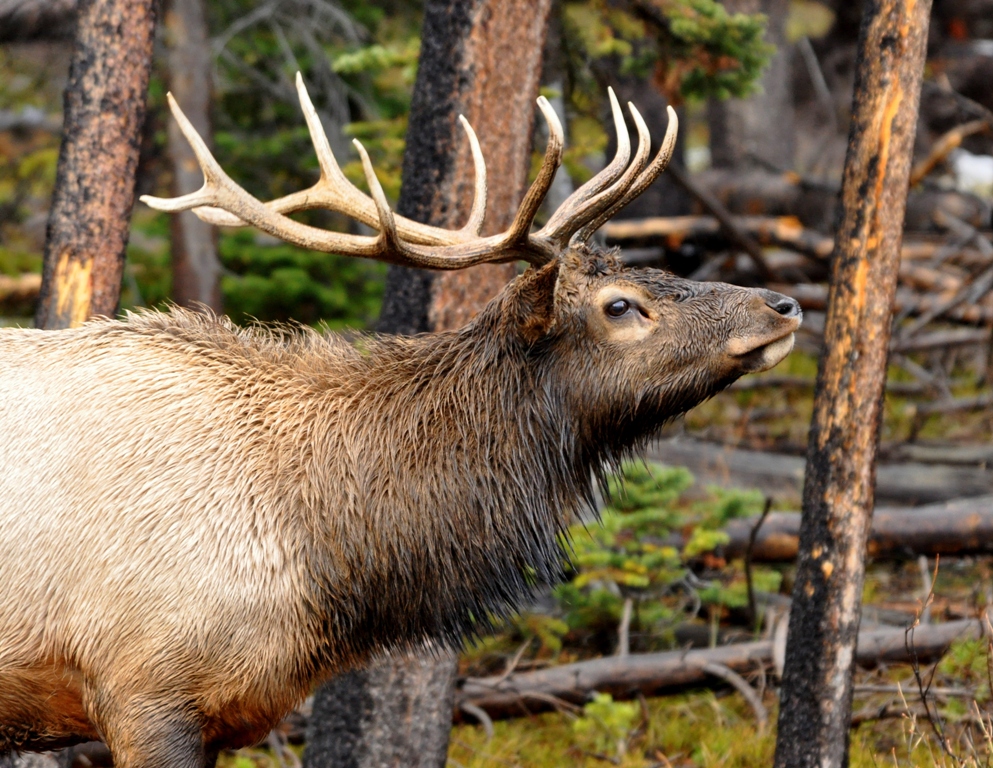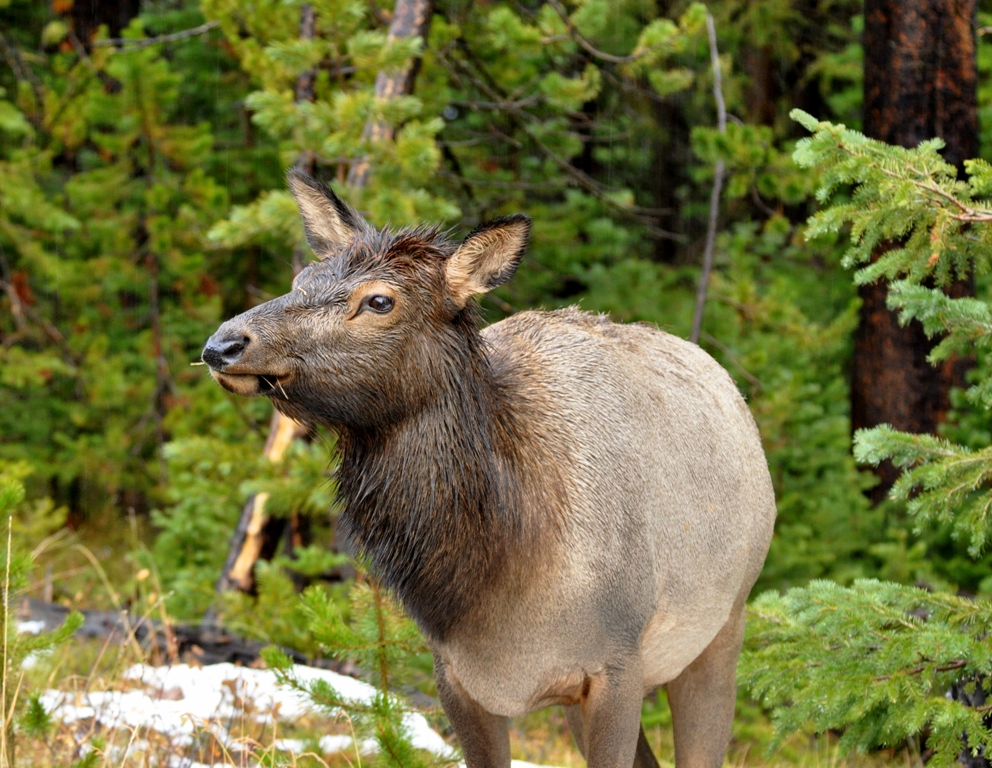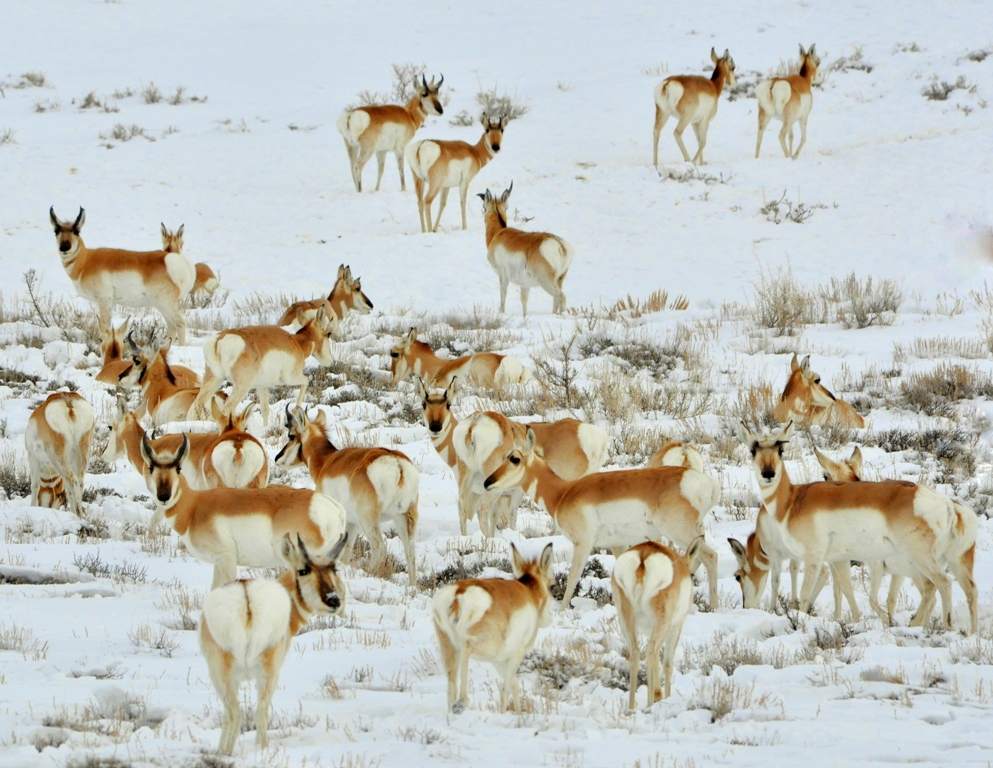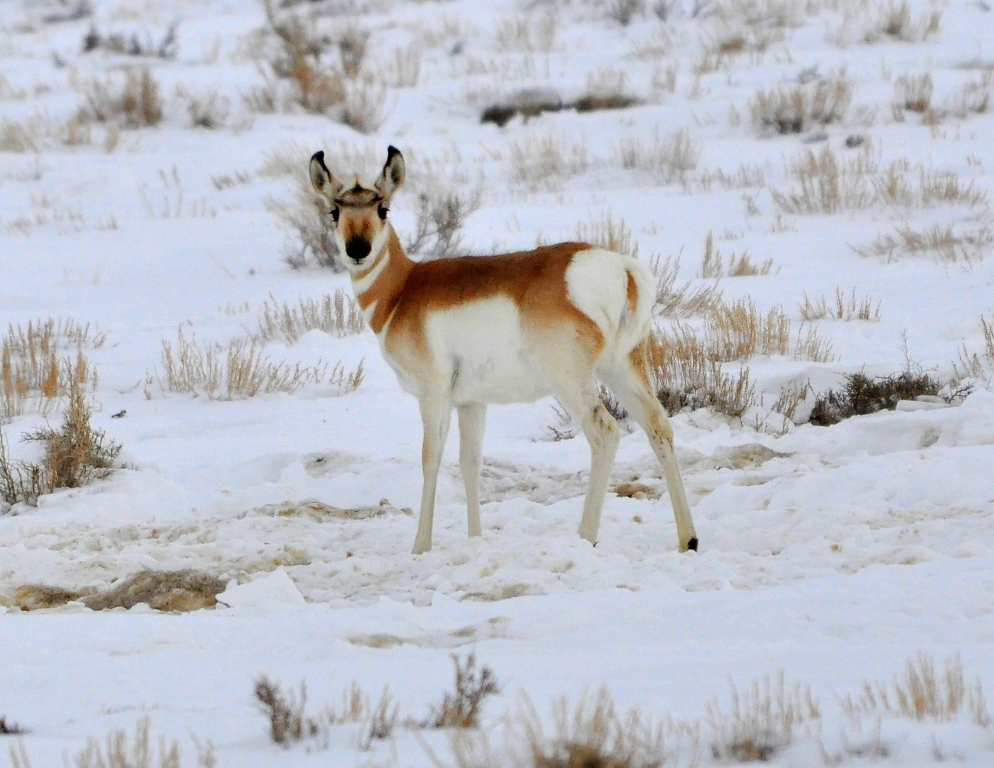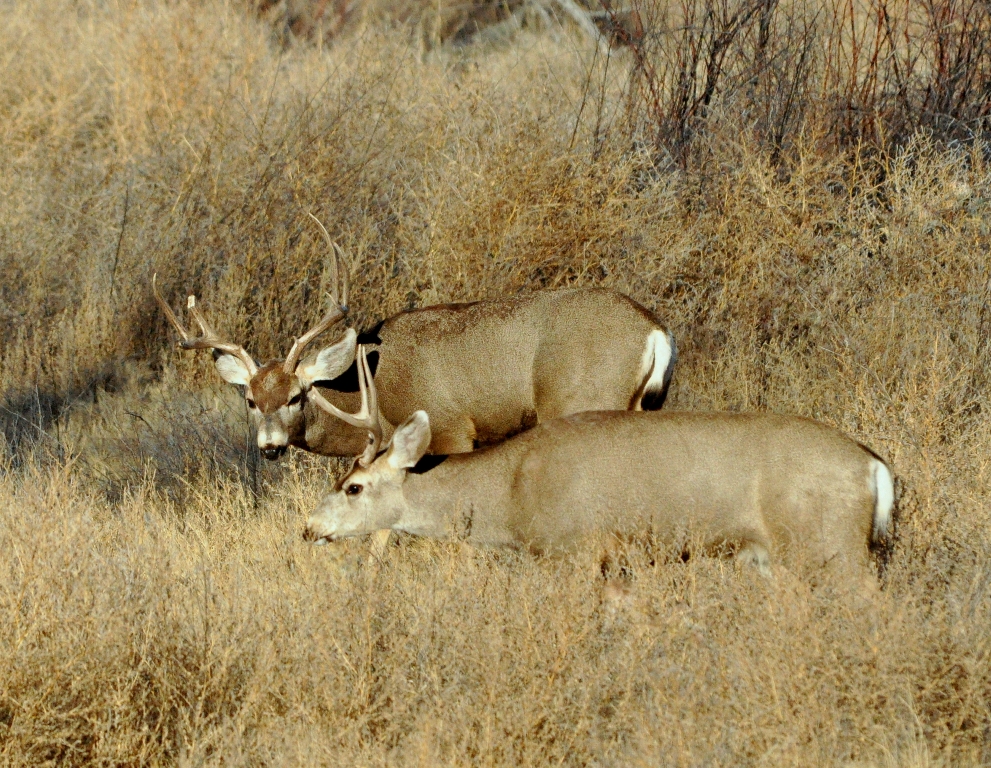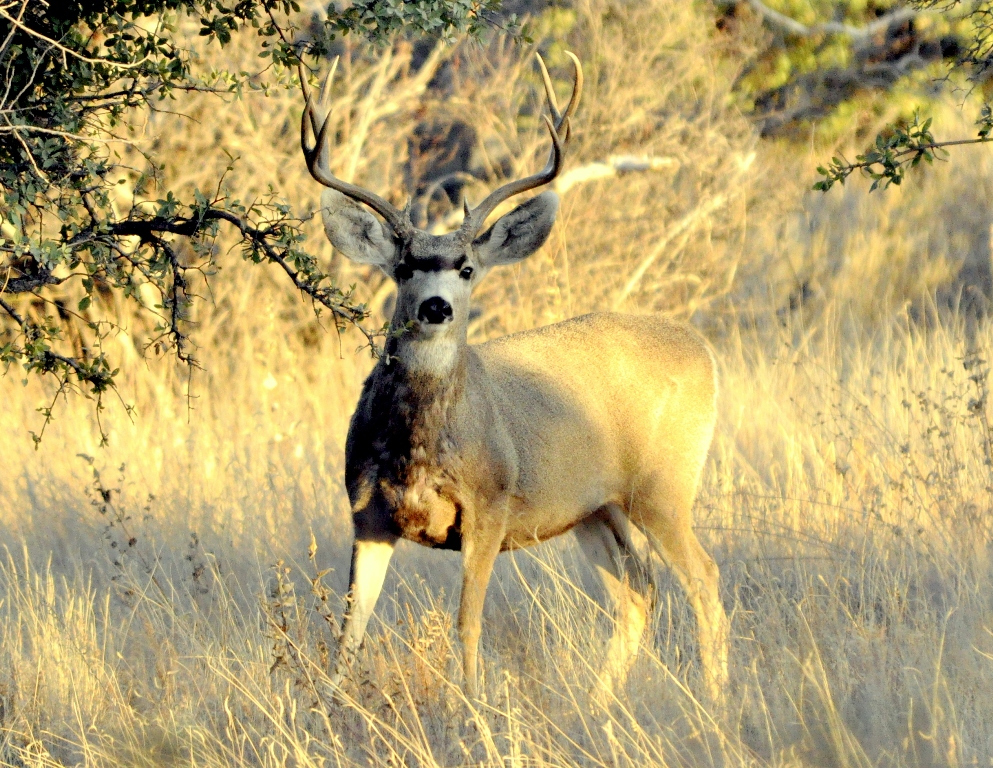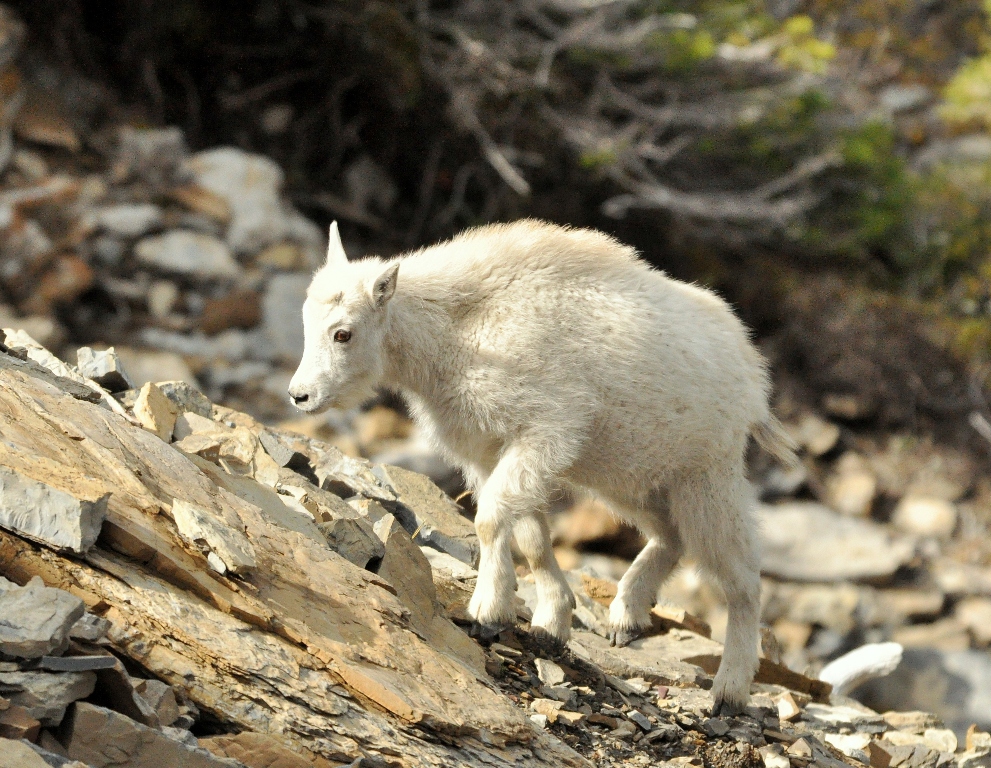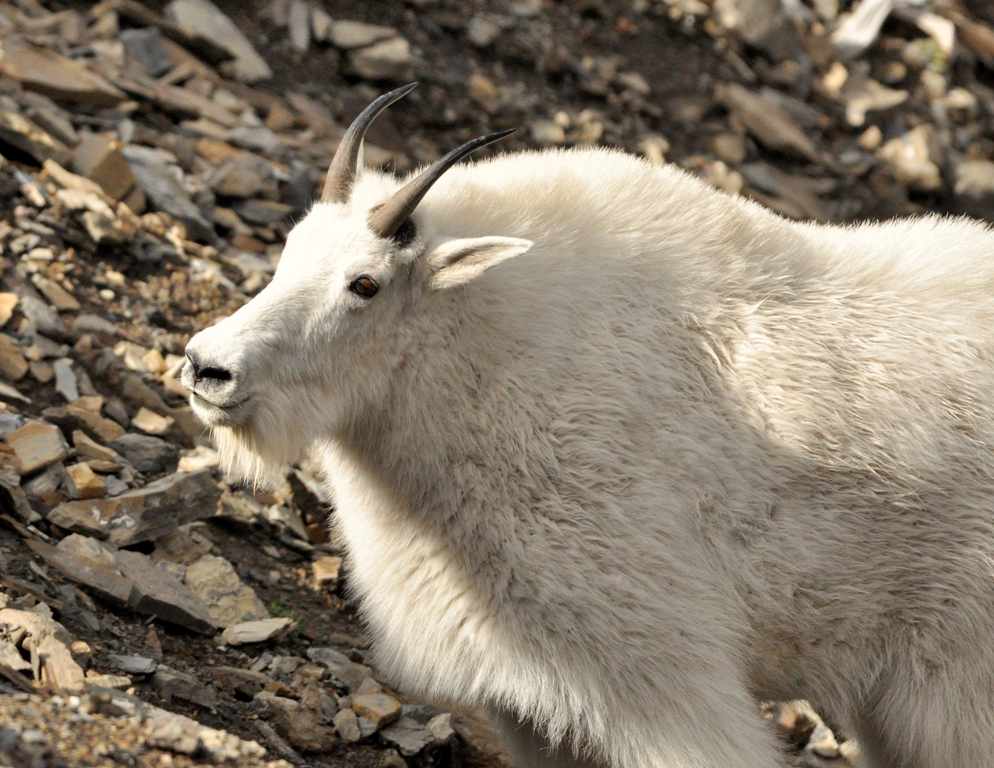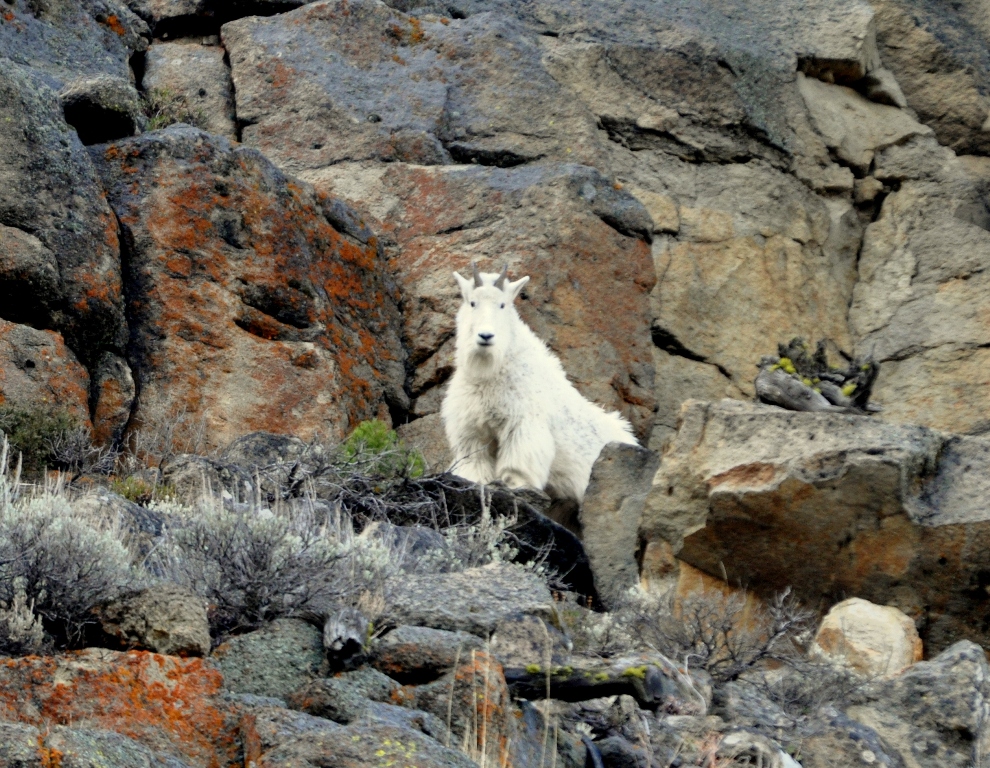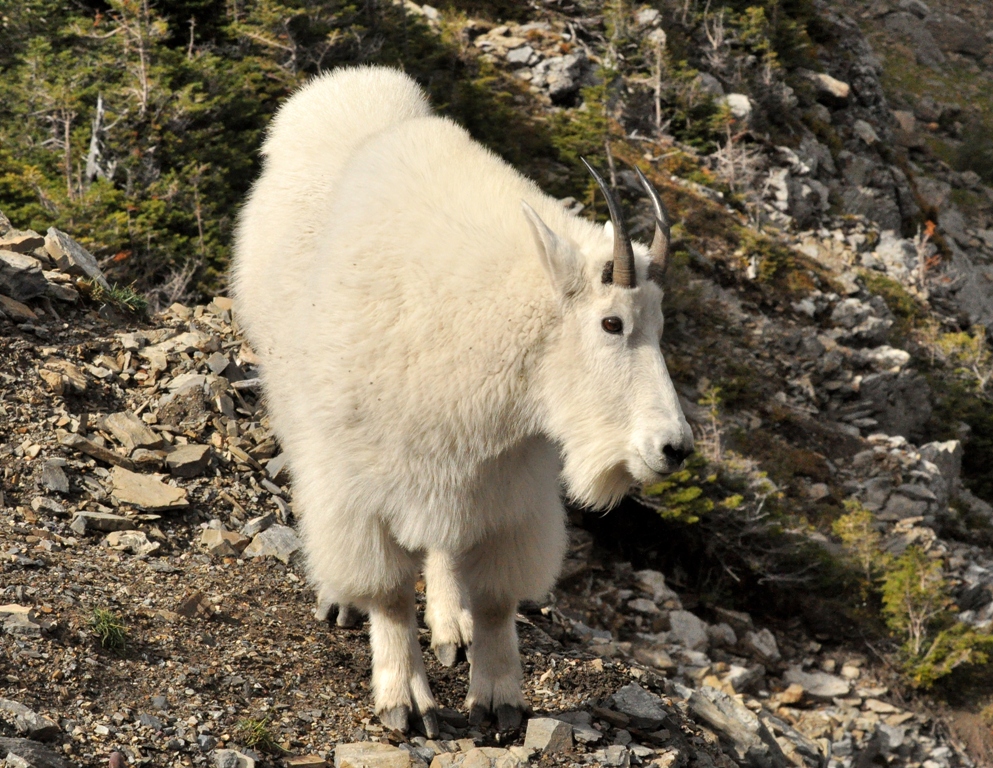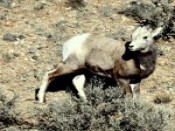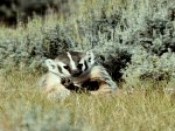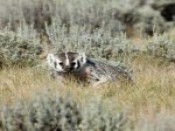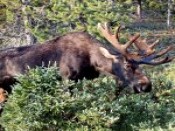Brown Bear – Female | Haines, Alaska | June, 2011
This female Brown Bear had 3 cubs with her that were 1 year old. She appeared to be quite old and we could not help but wonder how many cubs she had raised in her lifetime. |MC46-0266
Read MoreBlack Bear | Radium Hot Springs, British Columbia | June, 2011
This Black Bear was busy eating dandelion stems. MC48-0104
Read MoreGrizzly Bear | Yellowstone National Park | May, 2011
It had just stopped raining when I took this picture and this bear was very wet. |MC39-0188
Read MoreSnowshoe Hare | Yellowstone National Park | May, 2011
This picture was taken the end of May, and I have no idea why this Snowshoe Hare has not changed to it’s brown summer coat. With most of the snow gone it really stands out, making it easy for a predator to spot. |MC39-0009
Read MoreArctic Ground Squirrel | Deadhorse, Alaska | June, 2011
Arctic Ground Squirrels are the champion hibernator of the Arctic. Each winter they spend from 6 to 8 months in their underground burrows, where their heartbeats slow to about 2 per minute, and their core body temperature drops as low as 27 degrees for up to 3 weeks at a time. |MC44-0012
Read MoreCaribou – Bulls | Deadhorse, Alaska | June, 2011
These 4 bulls are Barren-Ground Caribou and belong to the Central Arctic Herd. The spring migration for these bulls will be complete when they reach the coastline of the Arctic Ocean, which is still about 50 miles further north. When they reach the coast they will spread out to feed, the cows will have their calves, and in 2 to 3 months they will start migrating back south for the winter. |MC44-0265
Read MoreMusk Ox | Atigun Pass, Alaska | June, 2011
Musk Ox have a double coat of hair,a long outer layer that hangs to the ground in winter, and a under layer called qivuit which is the warmest and lighest wool in the world. Prices for qivuit yarn range between $40 to $80 dollars per ounce. This animal has started sheading it’s outer coat. |MC42-0216
Read MoreJavelina | Lordsburg, New Mexico | January, 2010
Even though Javelines may appear to be closely related to pigs, they are in fact a quite different animal and are in a different family.Pigs and Javelinas actually parted ways about 30 million years ago. These animals, which are more correctly called Collared Peccarys, have very poor eye sight, but a very good sense of smell.Due to their poor eyesight they may appear to be charging when ,in fact, they are simply trying to escape. | MC17-0125
Read MoreCaribou – Bull | Deadhorse, Alaska | June, 2011
This is a Barren-ground Caribou bull from the Central Arctic Herd. |MC44-0059
Read MoreMusk Ox – Cow | Deadhorse, Alaska | June, 2011
This Musk Ox cow had a very young calf with her that is out of the picture to the right. |MC44-0201
Read MoreMusk Ox – Calf | Deadhorse, Alaska | June, 2011
This calf is only four or five weeks old. It’s mother is laying out of the picture to the left. |MC44-0208
Read MoreBrown Bear – Cub | Haines, Alaska | June, 2011
This is 1 of 3 Brown Bear cubs we watched for quite a long time along the coast near Haines, Alaska. |MC46-0305
Read MoreCaribou – Bull | Deadhorse, Alaska | June, 2011
This bull is a Barren-ground Caribou and belongs to the Central Arctic Herd. |MC45-0011
Read MoreCaribou – Immature Bull | Fort Nelson, British Columbia | June, 2009
This young bull is a Woodland Caribou. They live a little further south than their Barren-ground Caribou relatives. |MC8-0443
Read MoreJavelina | Lordsburg, New Mexico | March, 2009
Javelinas are a lot of fun to try to photograph up close. Due to their poor eyesight, if you carefully move into position in front of a group that is feeding, they will often move right past you and never know you are there. More often than not, the wind will carry your scent to them and they will scatter in all directions. | |MC2-0485
Read MoreCaribou – Immature Bull | Muncho Lake, British Columbia | May, 2009
This young bull is a Woodland Caribou. |MC5-0473
Read MoreMoose – Bull | Seward, Alaska | June, 2009
If you look close you can see an excellent example of moose drool. |MC7-0154
Read MoreBarbary Sheep | Lincoln, New Mexico | February, 2011
Barbary Sheep are not native to New Mexico. They were transplanted into New Mexico from North Africa 45 or 50 years ago. |MC32-0271
Read MoreGrizzly Bear | Glacier National Park | September, 2010
This Grizzly Bear was eating huckleberrys off of the bushes it is standing in. Huckleberrys are one of their favorite fall treats. |MC26-0094
Read MoreMusk Ox | Atigun Pass, Alaska | June, 2011
Contrary to their name and appearance, Musk Ox have no true musk gland and are not oxen. Musk Ox are more closely related to sheep and goats and are in their own genus, Ovibos, which is Latin for sheep ox. The males do emit a musty cologne during the mating season. |MC43-0150
Read MoreMoose – Bull | Walden, Colorado | September, 2010
This bull has a very long dewlap and his right horn was apparently injured when it was growing. |MC25-0255
Read MoreBlack Bear | Southfork, Colorado | July, 2009
This is about as light a colored Black Bear as we have ever seen. |MC10-0307
Read MoreCaribou – Bull | Fort Nelson, British Columbia | June, 2009
This is a Woodland Caribou bull. |MC8-043
Read MoreJavelinas | Lordsburg, New Mexico | March, 2009
Javelinas have, for centuries, been slowly moving north from their South American rainforest home, where they still live. They moved through Mexico and into Texas, Arizona, and New Mexico as recently as 150 years ago. In New Mexico they continue to move slowly north and have now reached Bosque del Apache, which is only 90 miles south of Albuquerque. How much farther north they can move will be determined by how well they adapt to the increasingly colder winters. ||MC2-0299
Read MoreElk | Walden, Colorado | January, 2011
As the winter snows pile up in the surronding mountains the Elk are forced to move into these open valleys and join into large herds to make it through the winter. |MC30-0142
Read MoreMule Deer – Bucks | Bosque del Apache | January, 2010
The deer in the background has broken off one of his horns fighting with other bucks to establish who is dominant. He does not appear too comfortable with the buck walking past him. |MC17-0229
Read More

